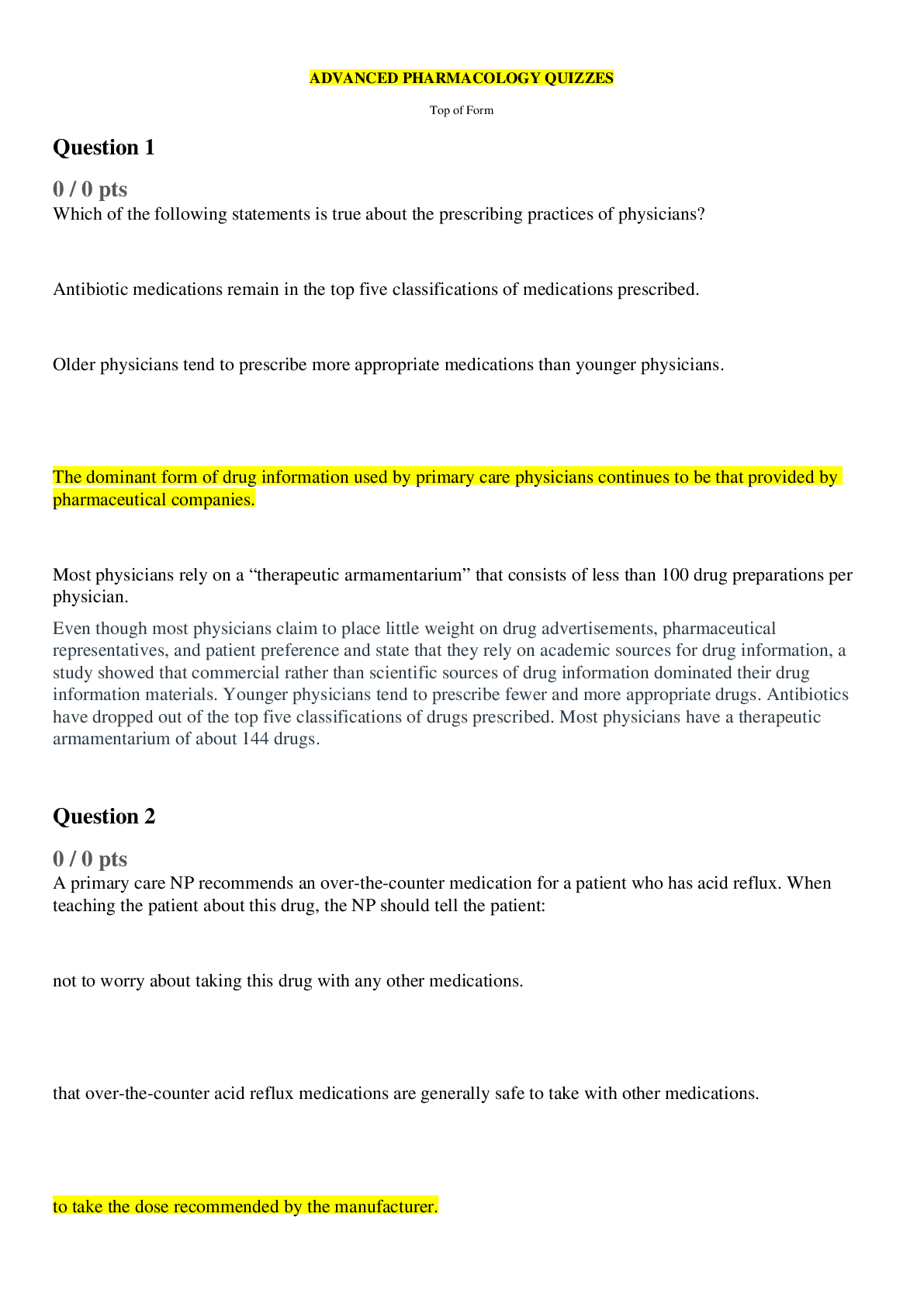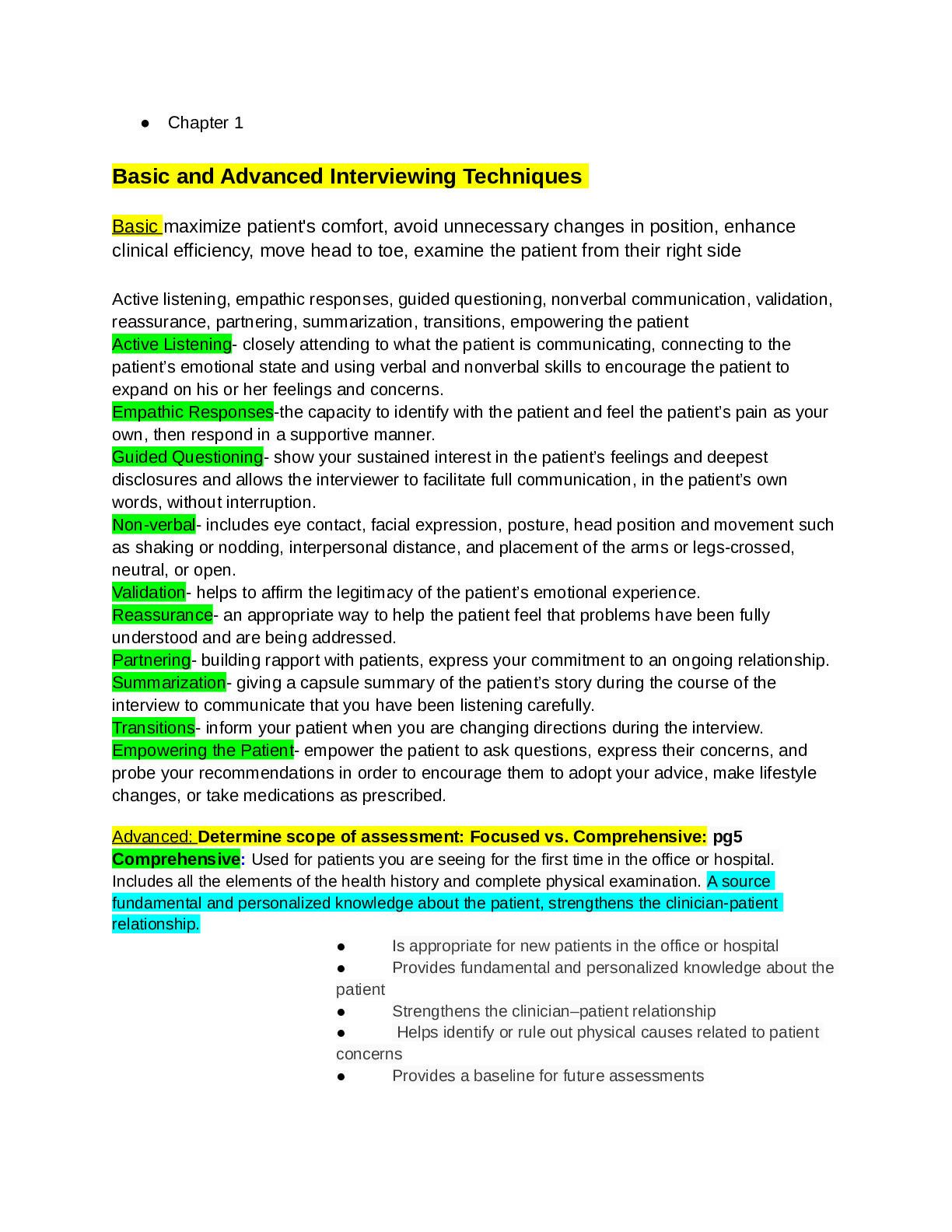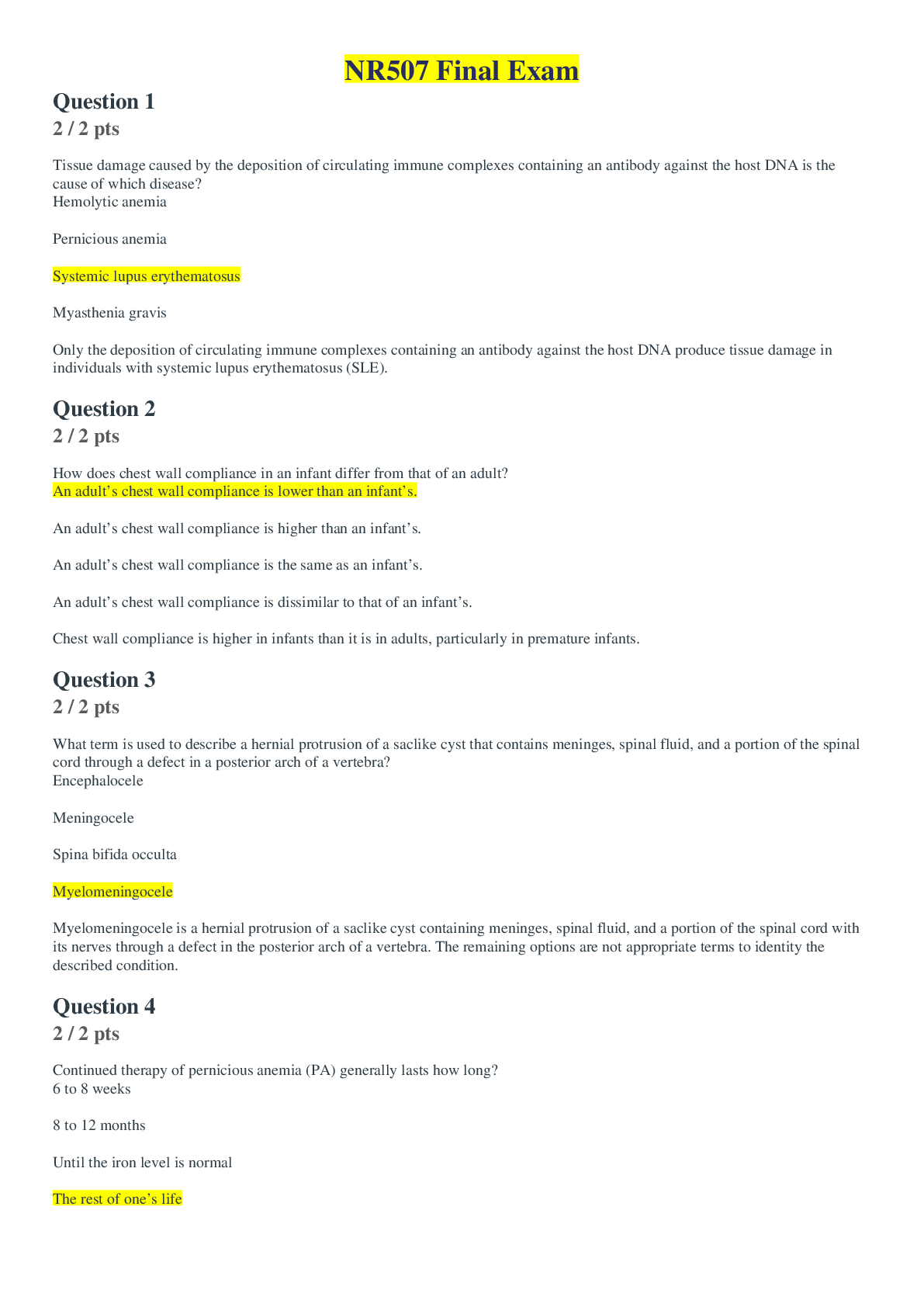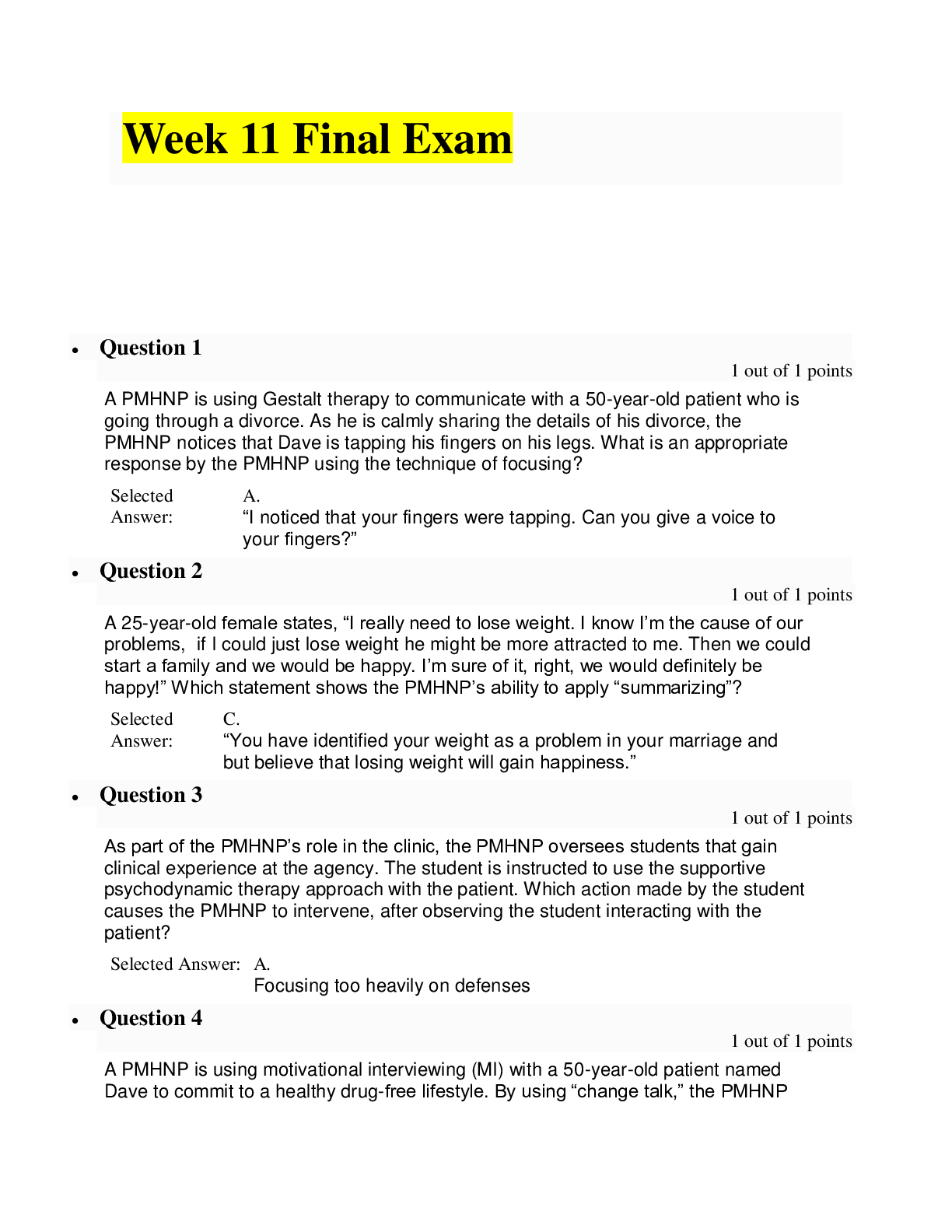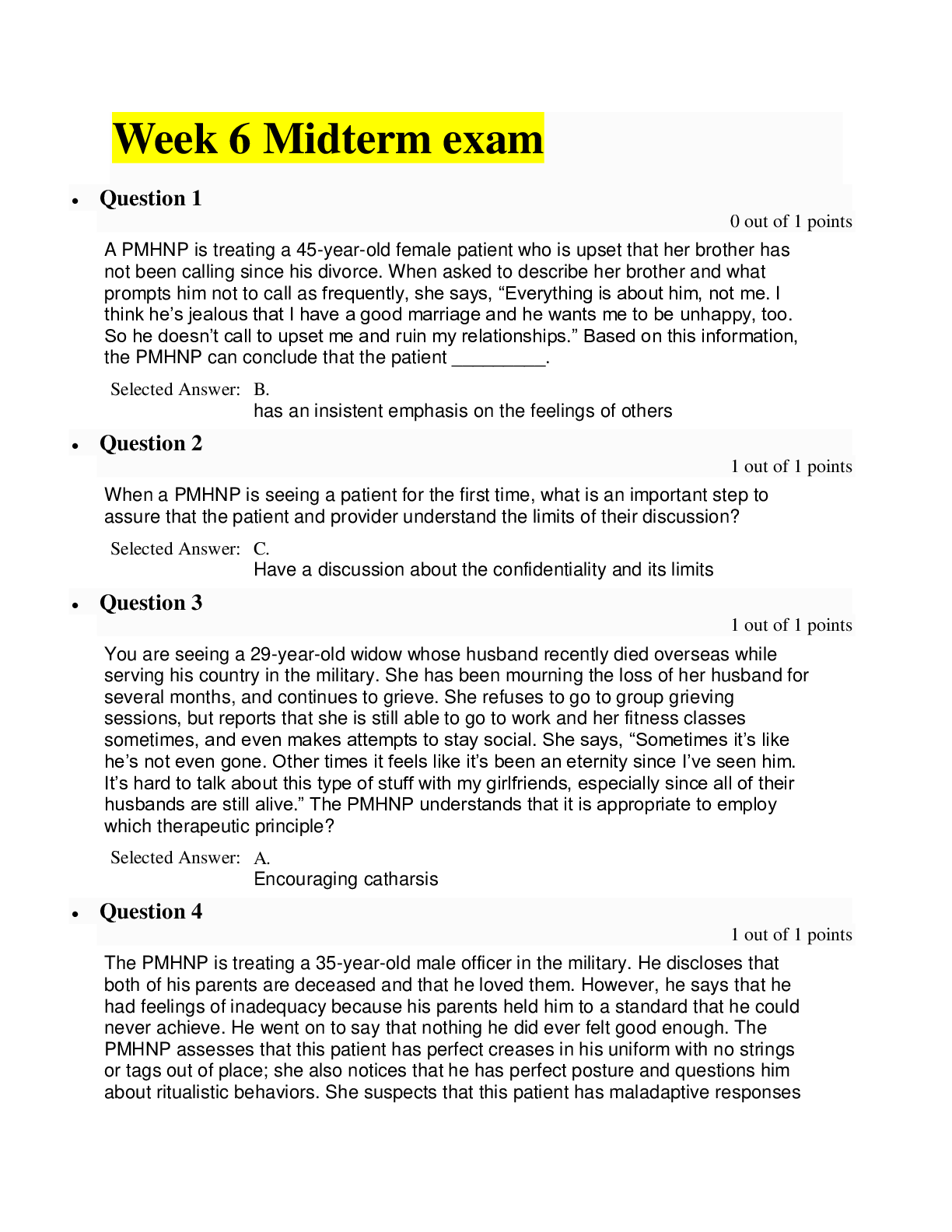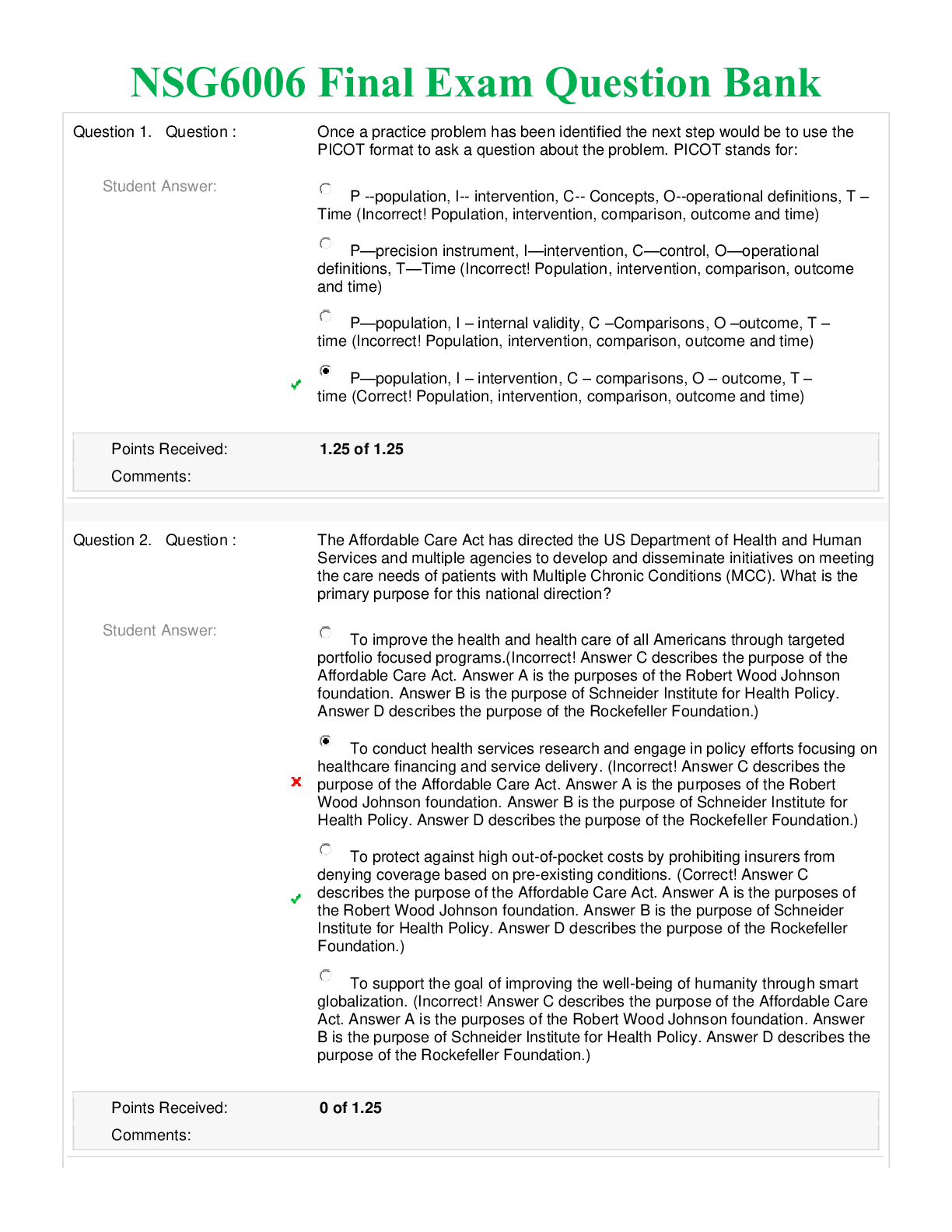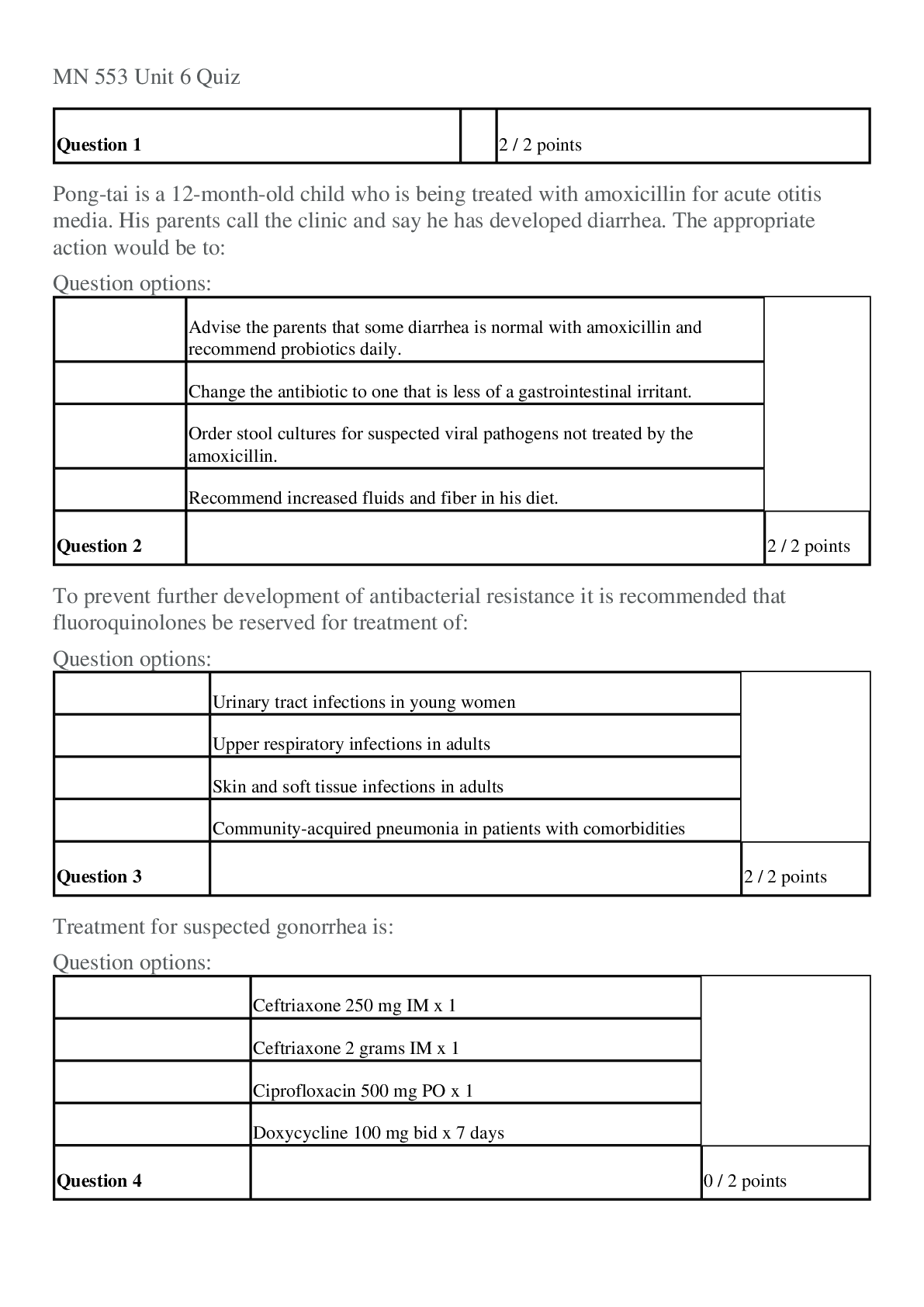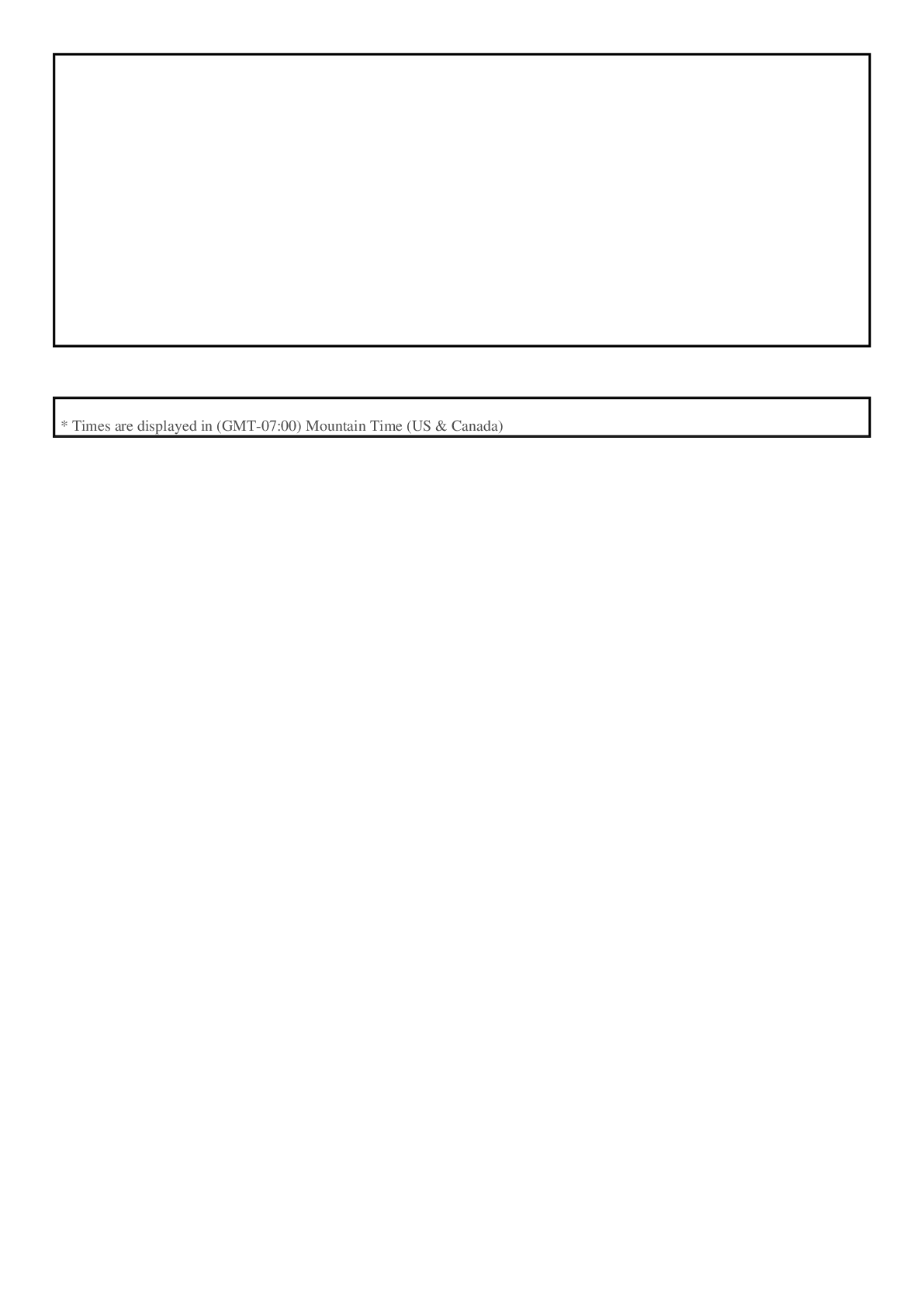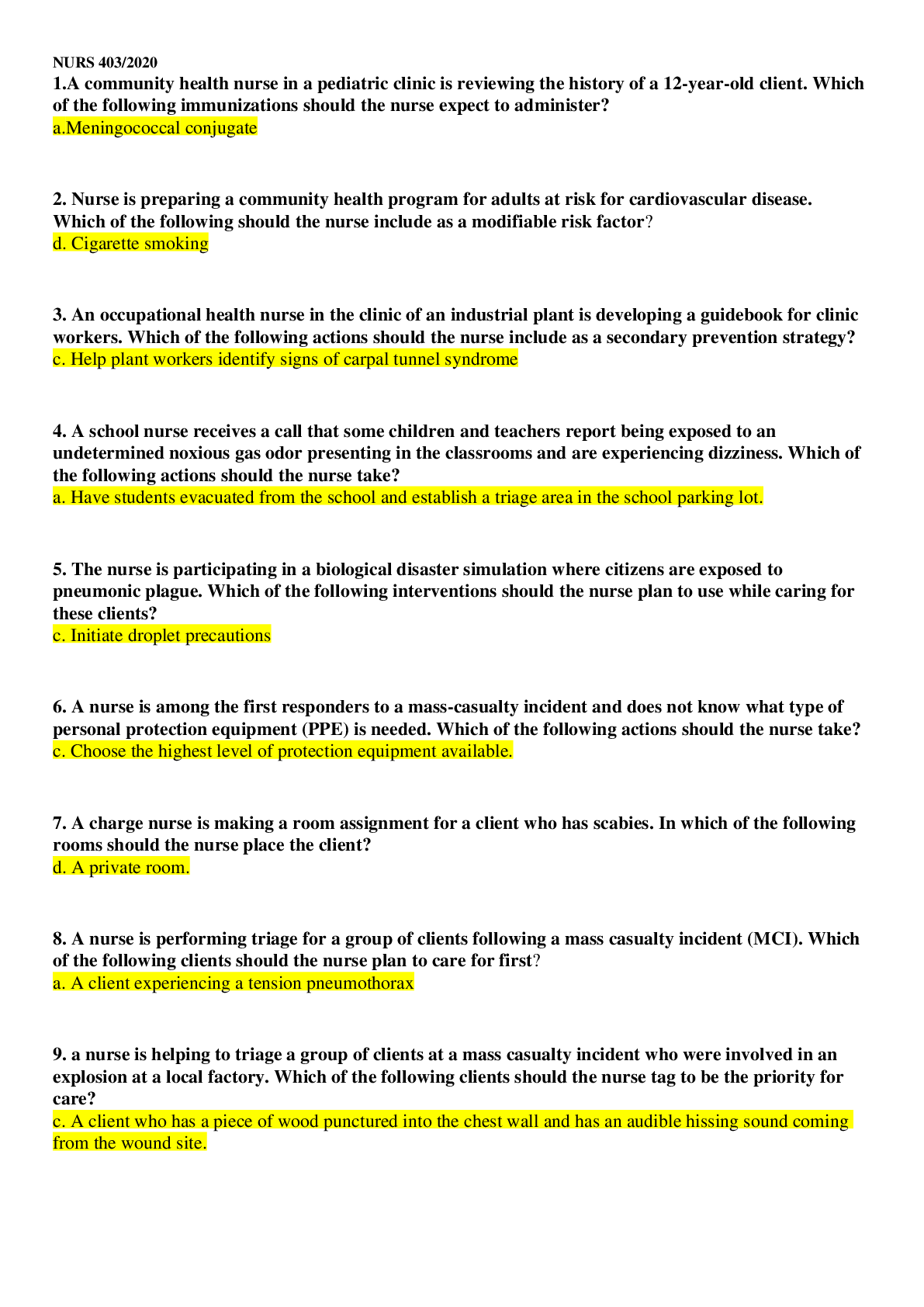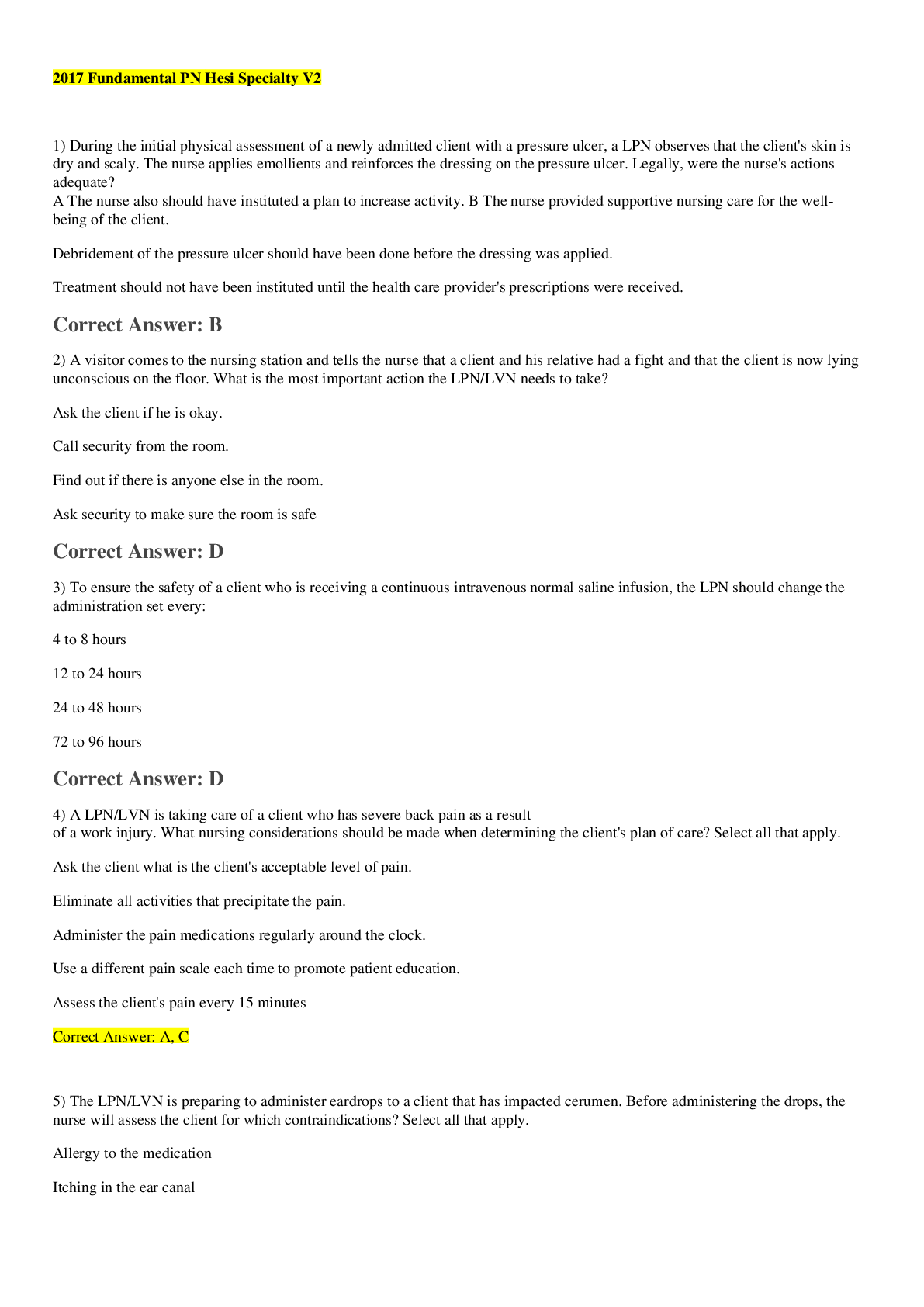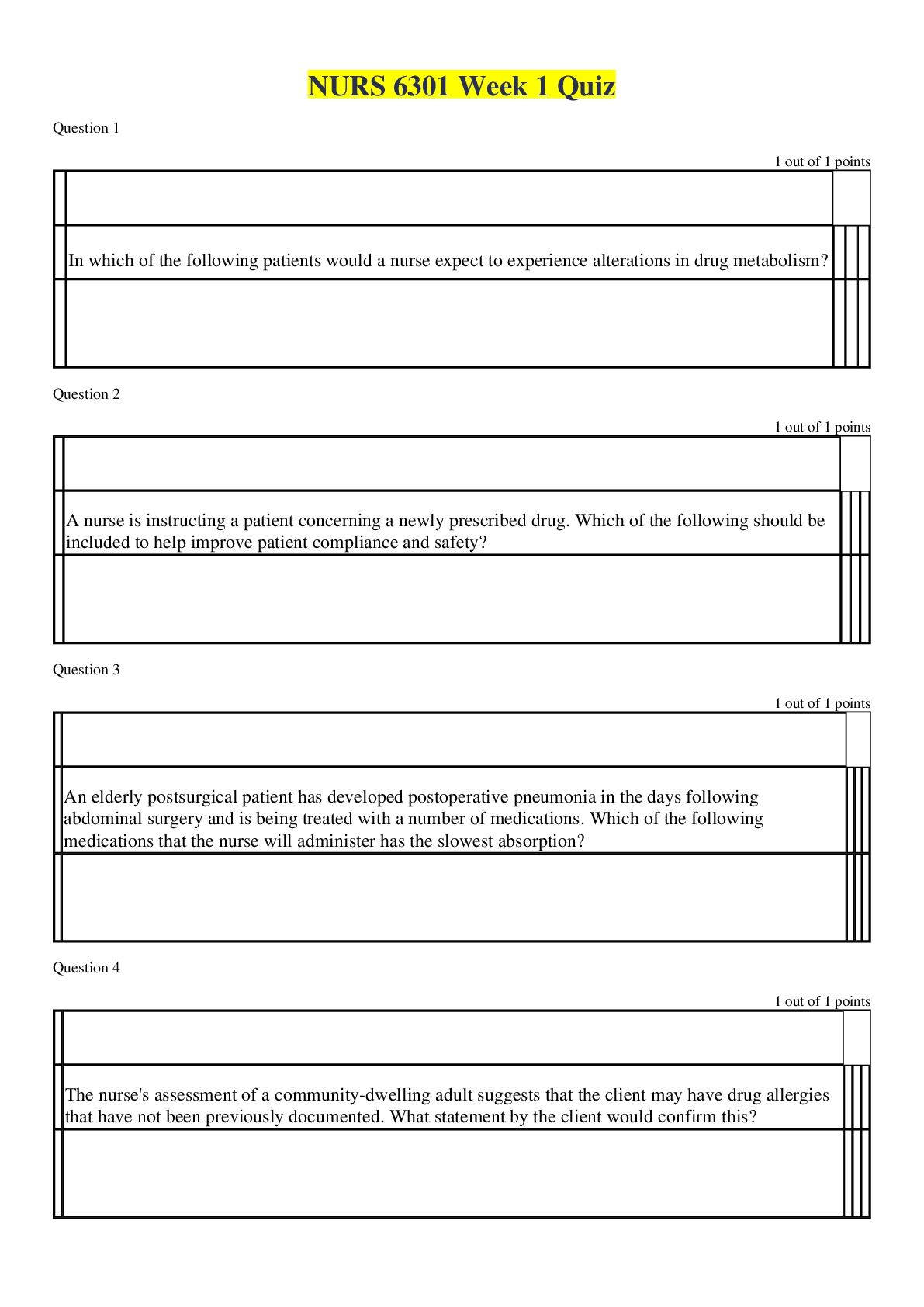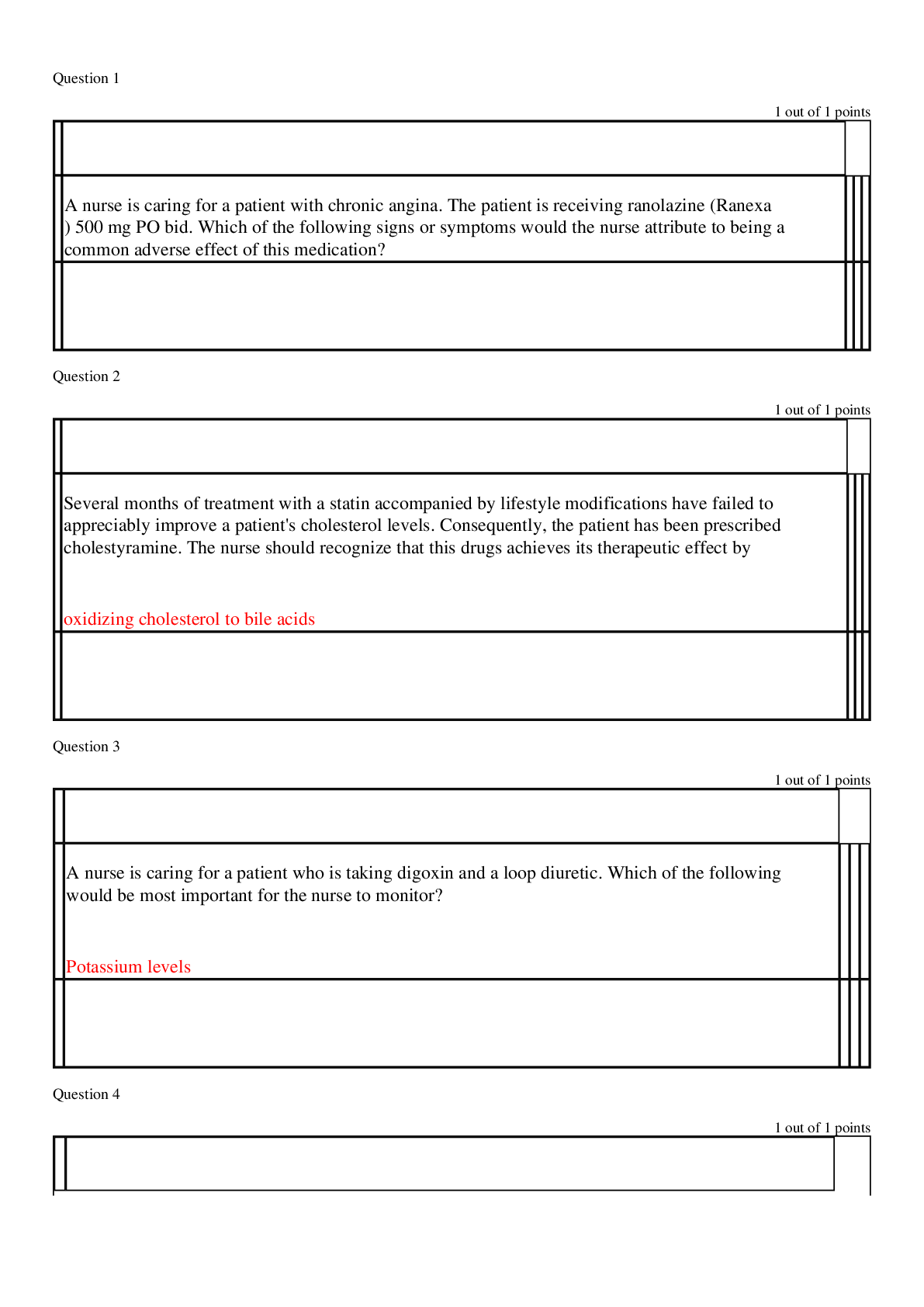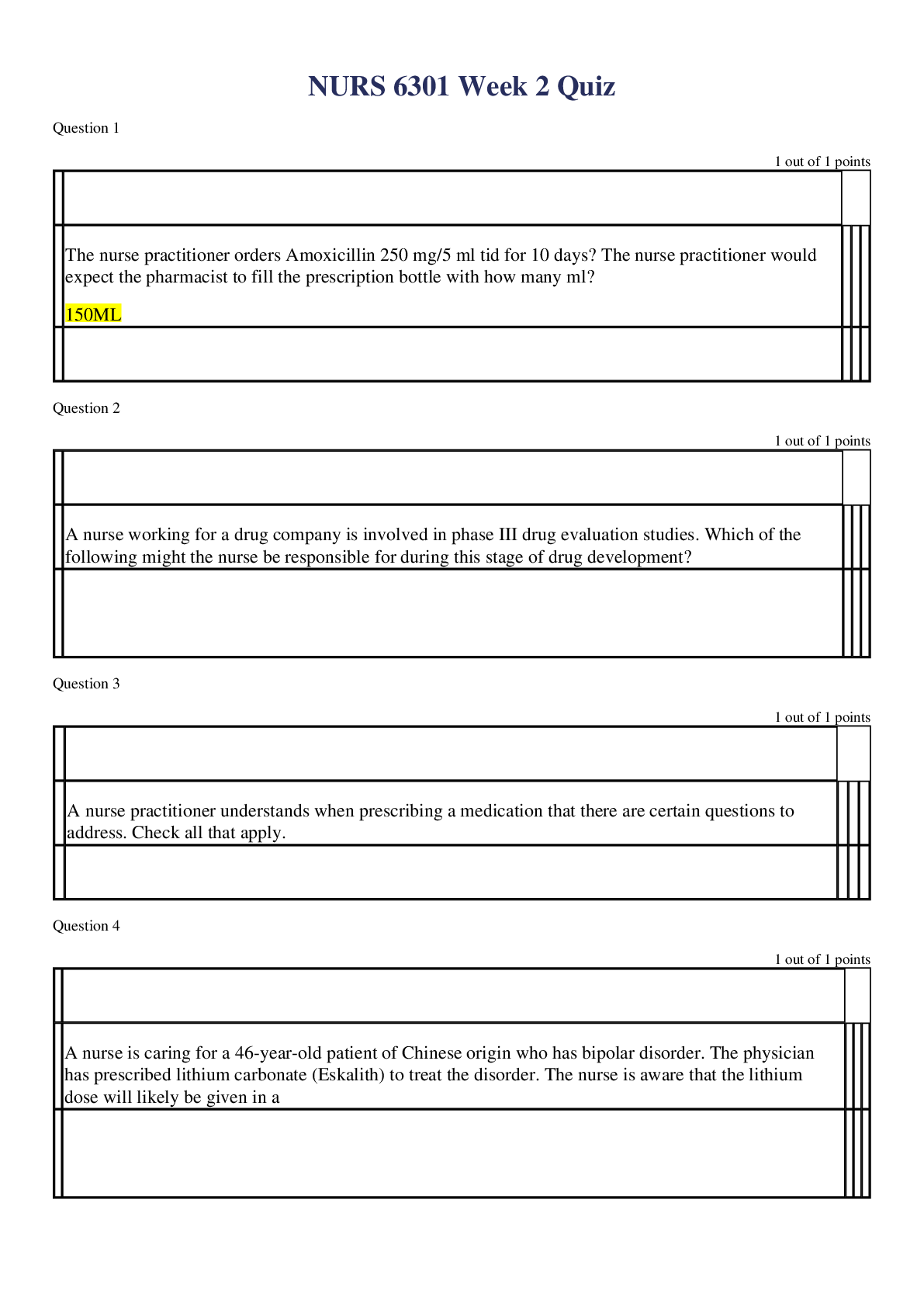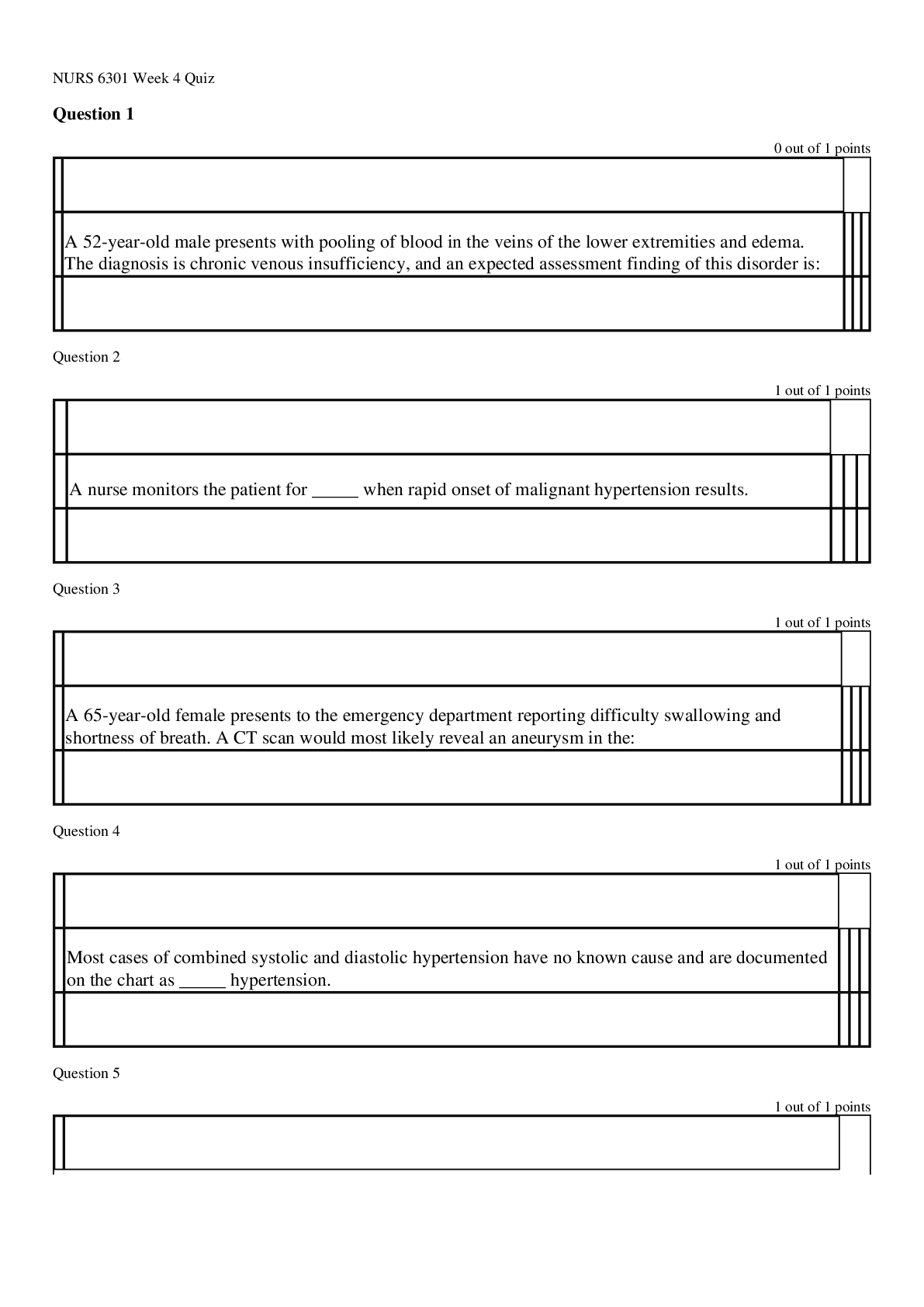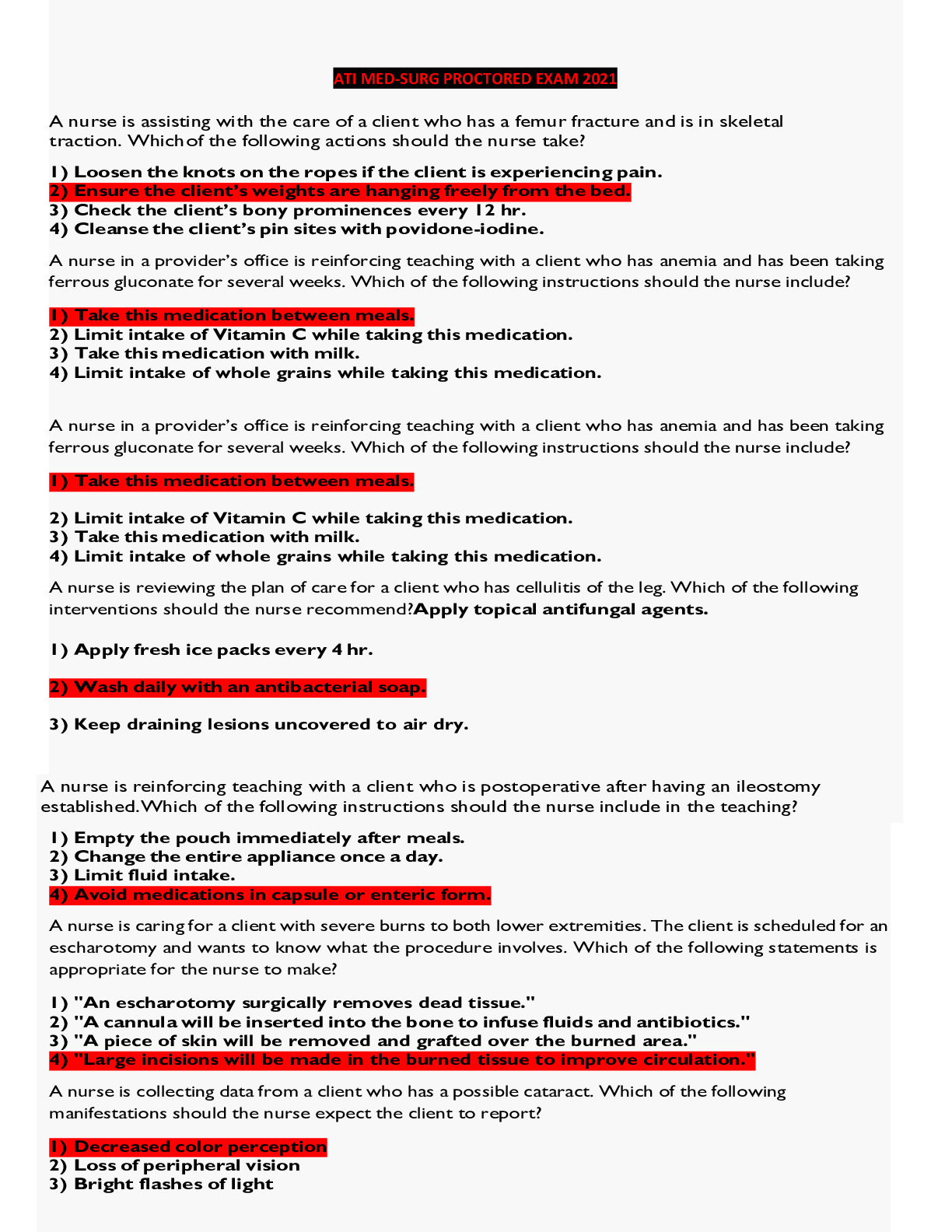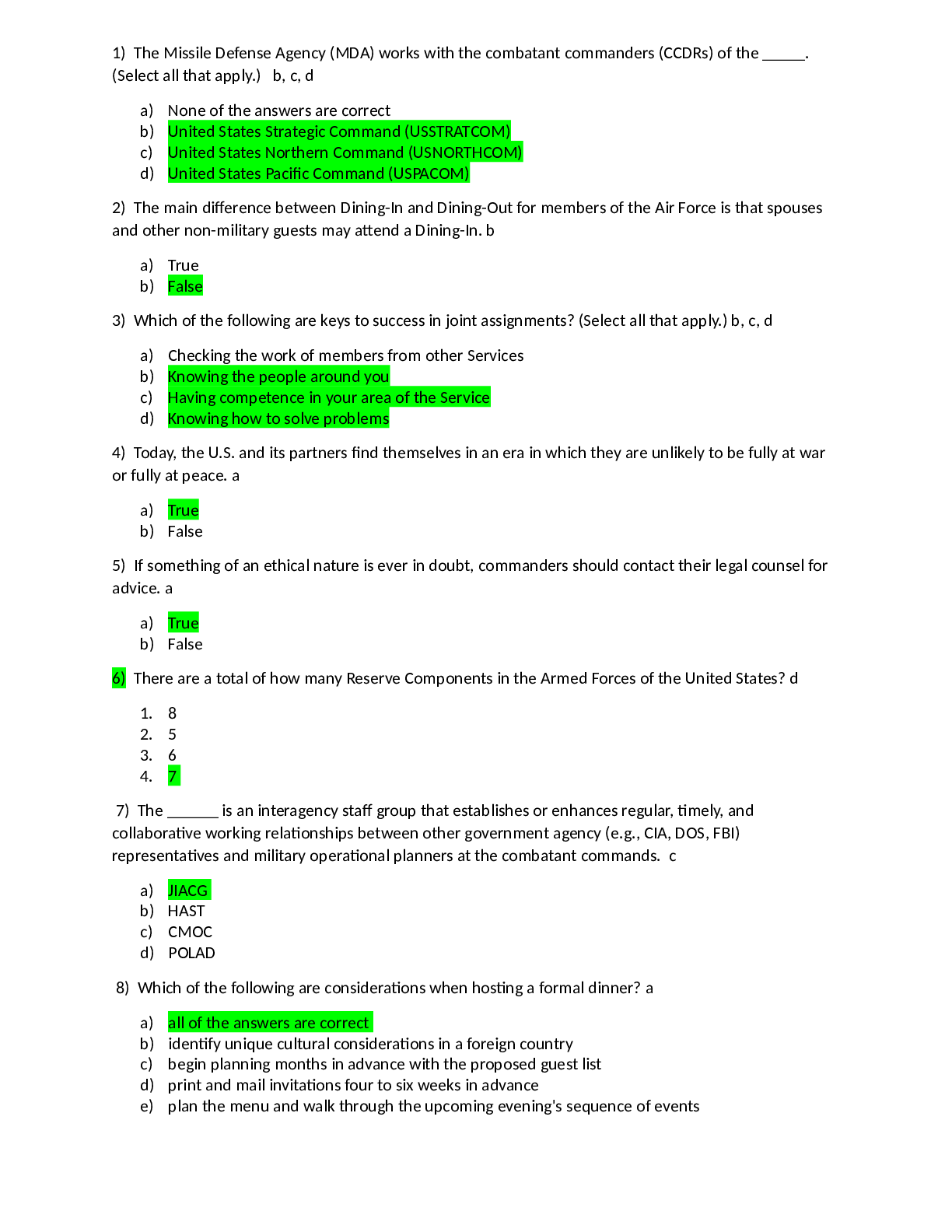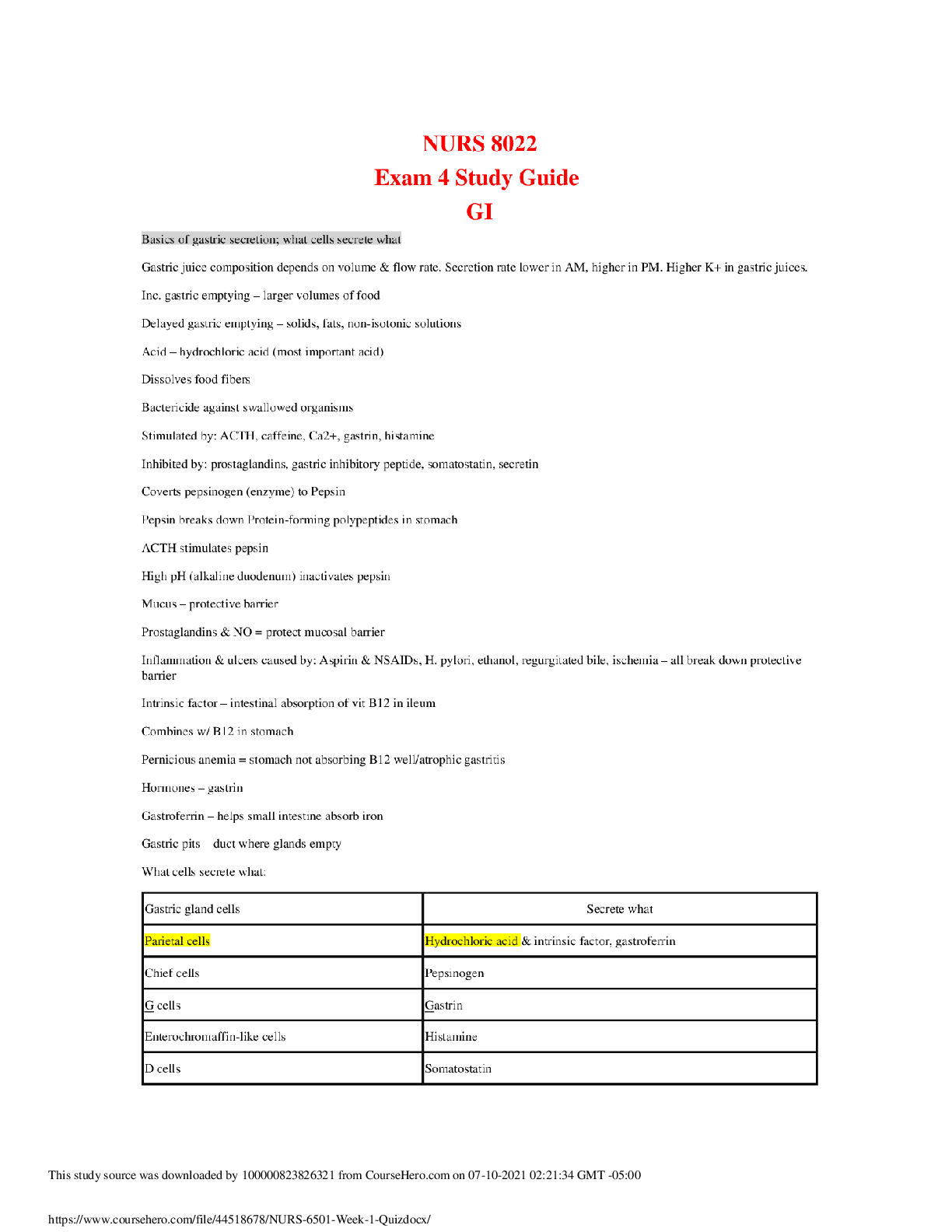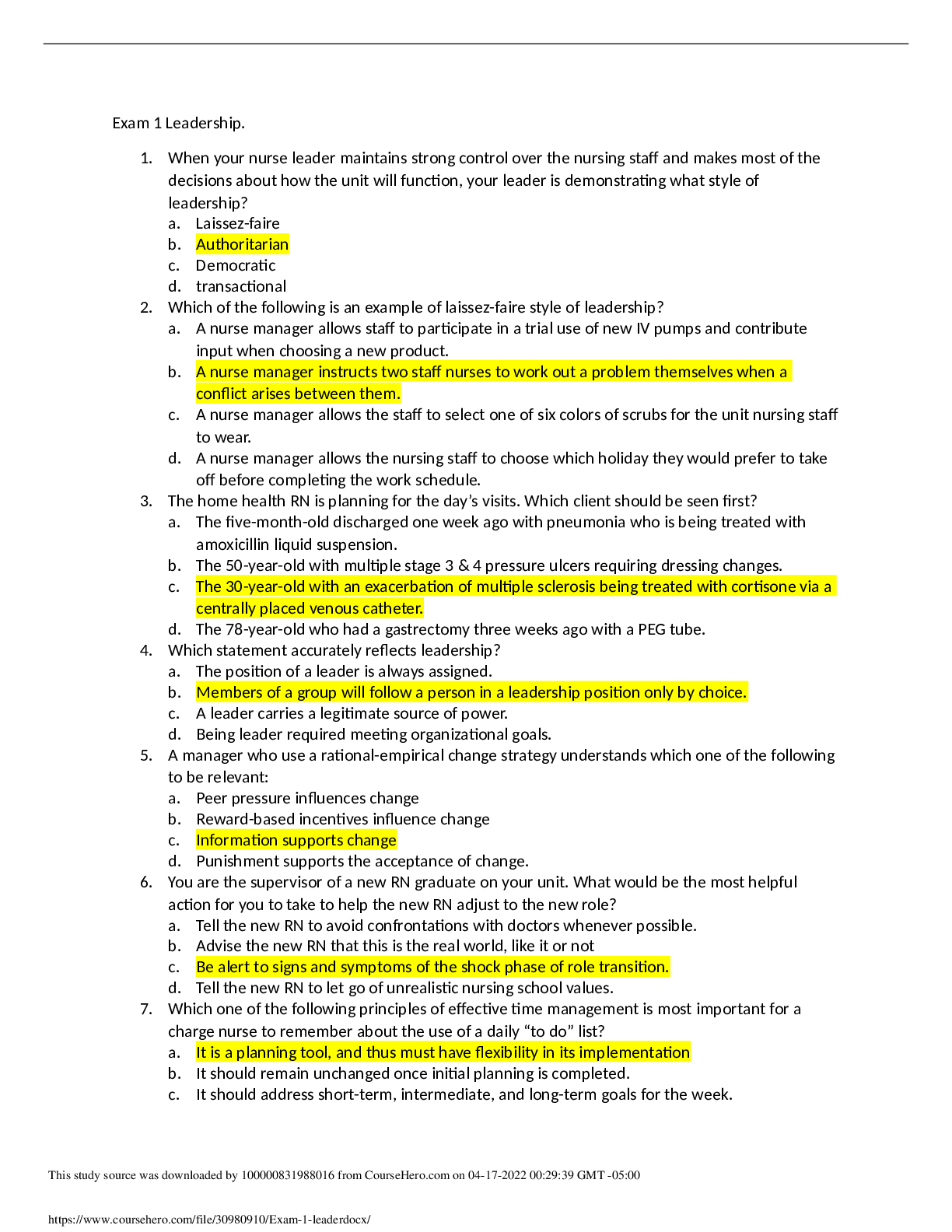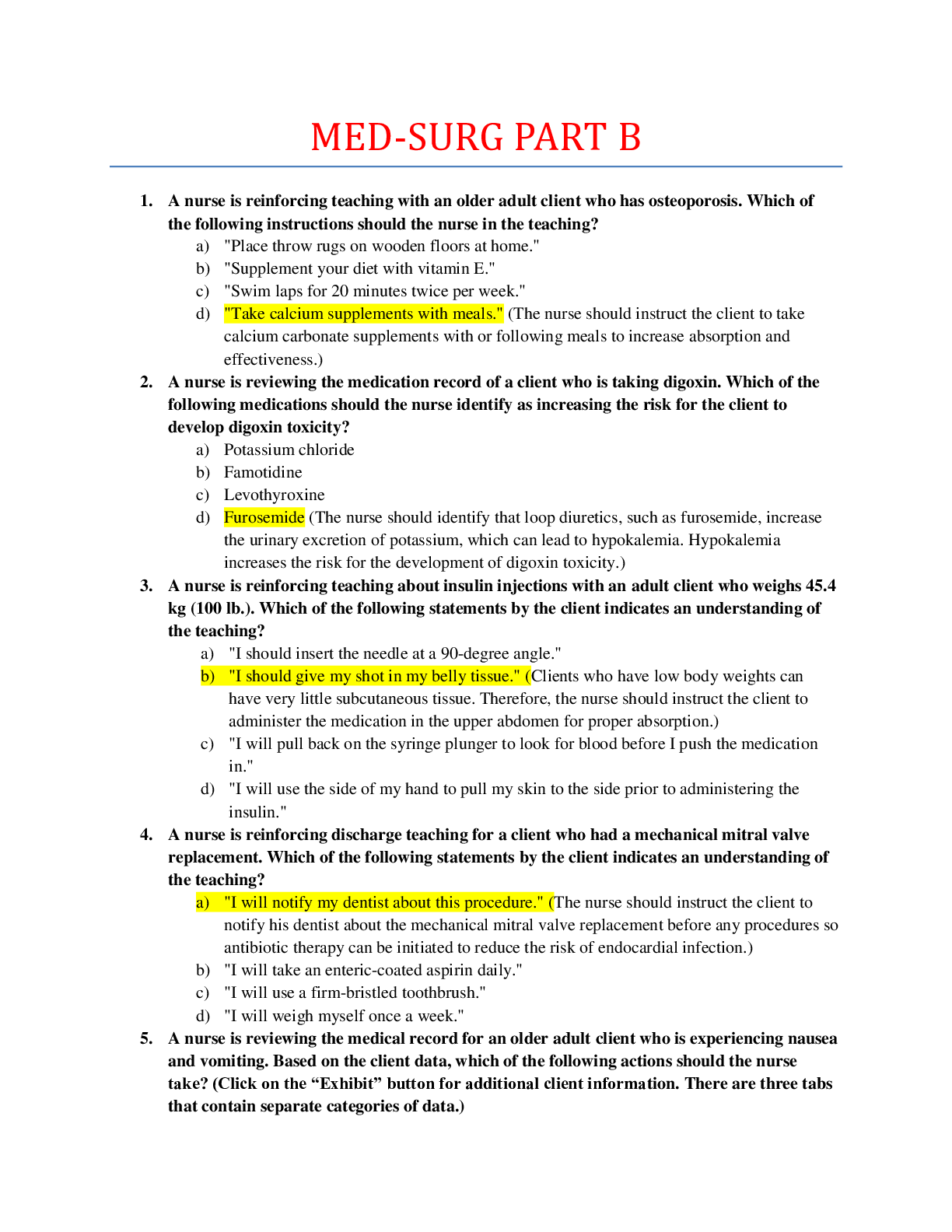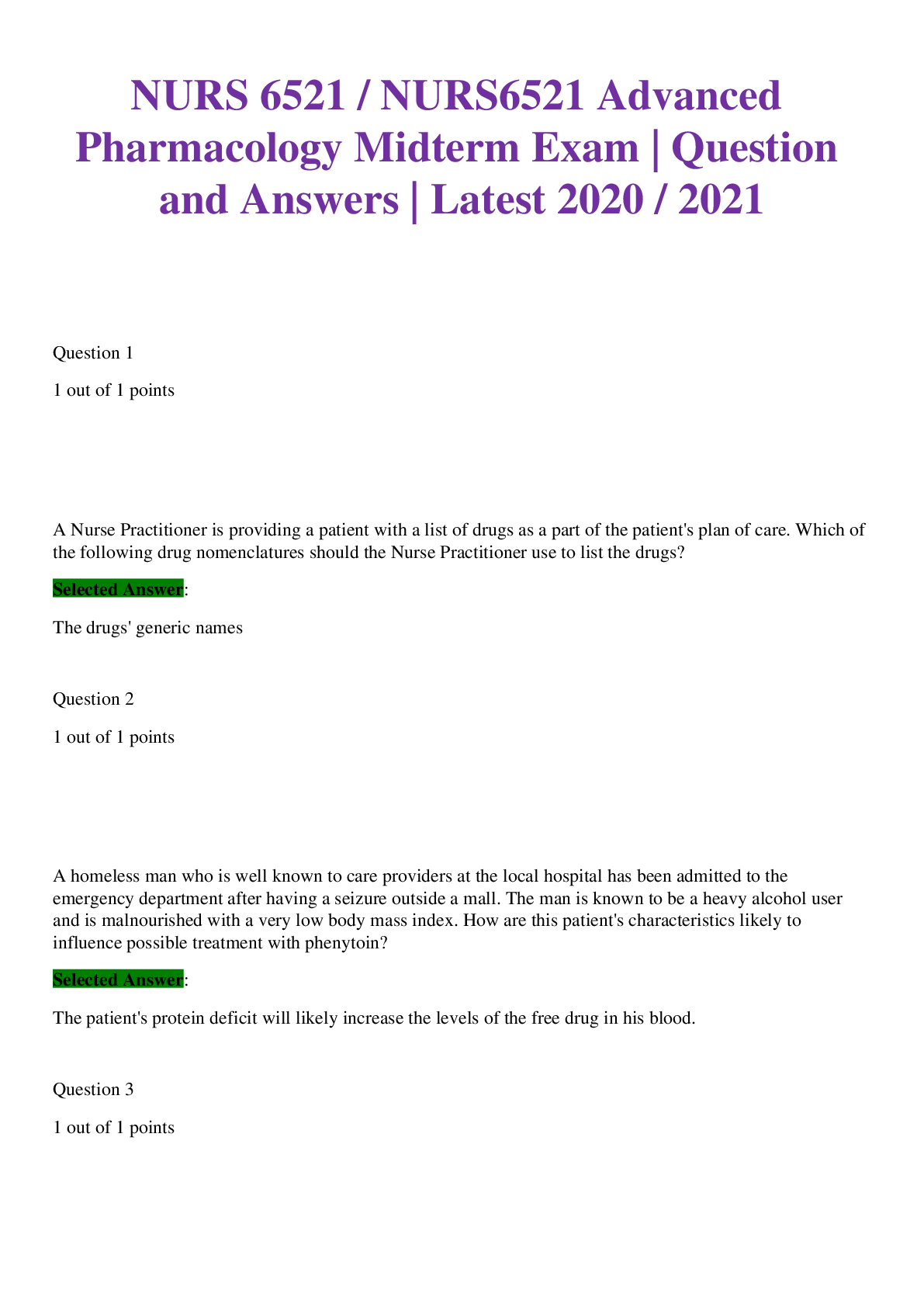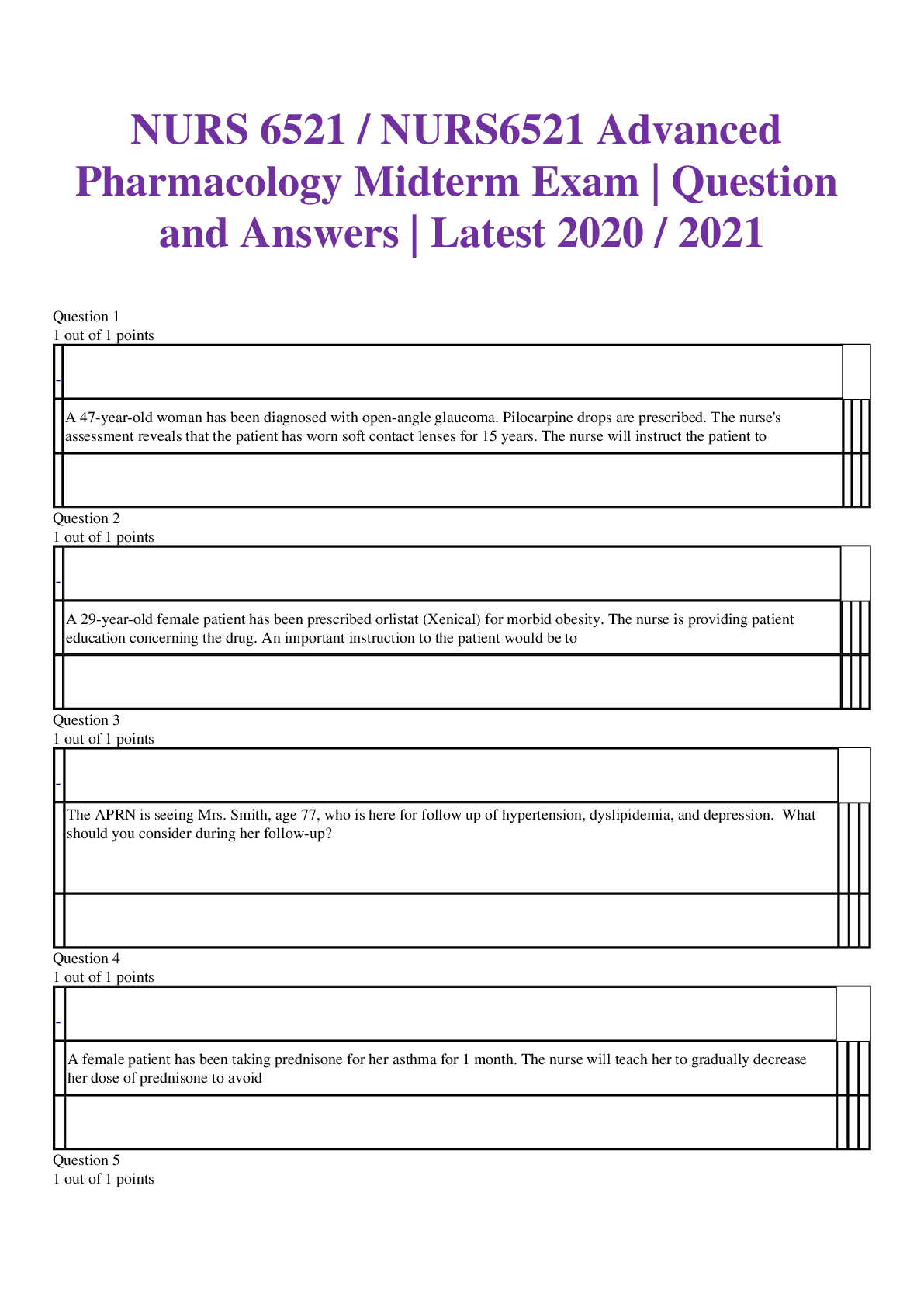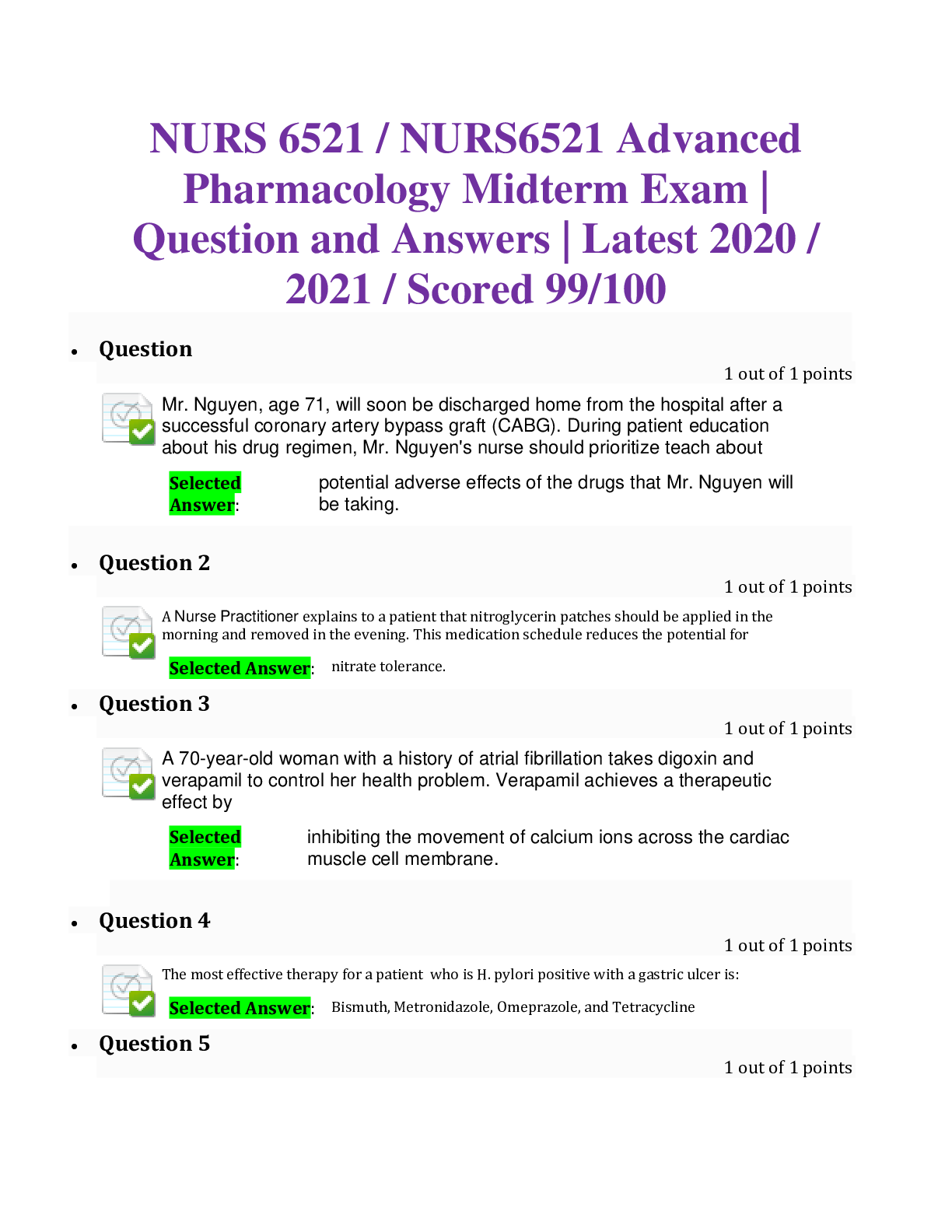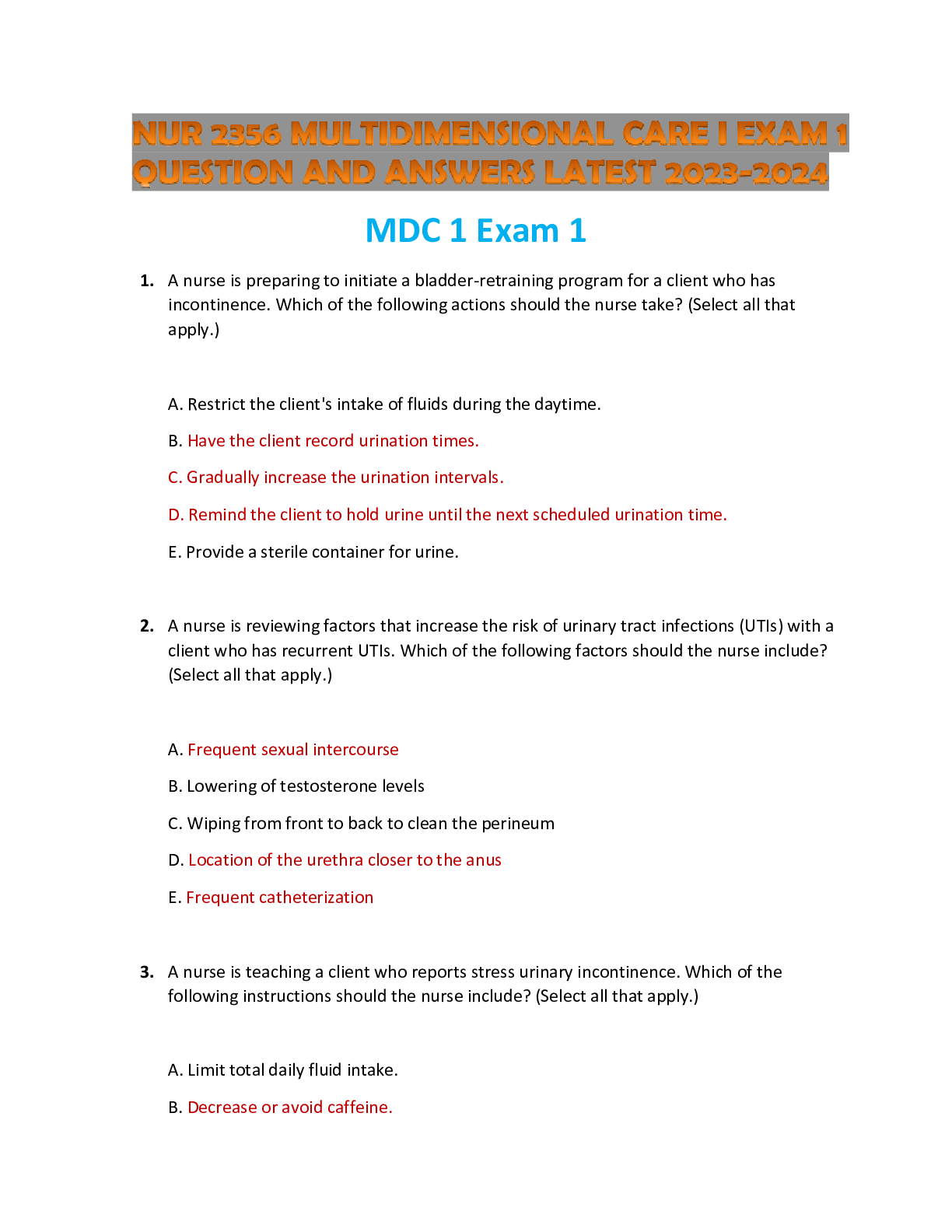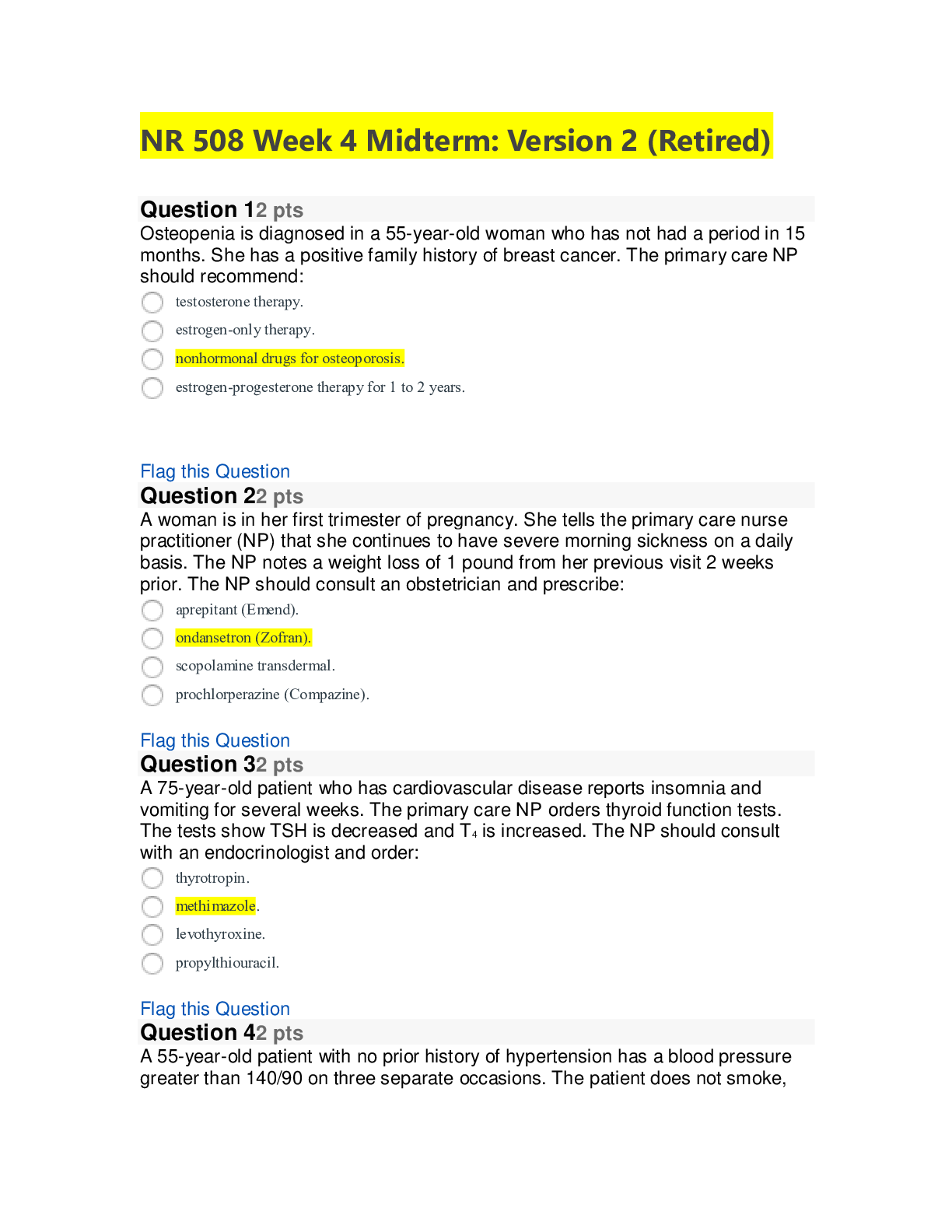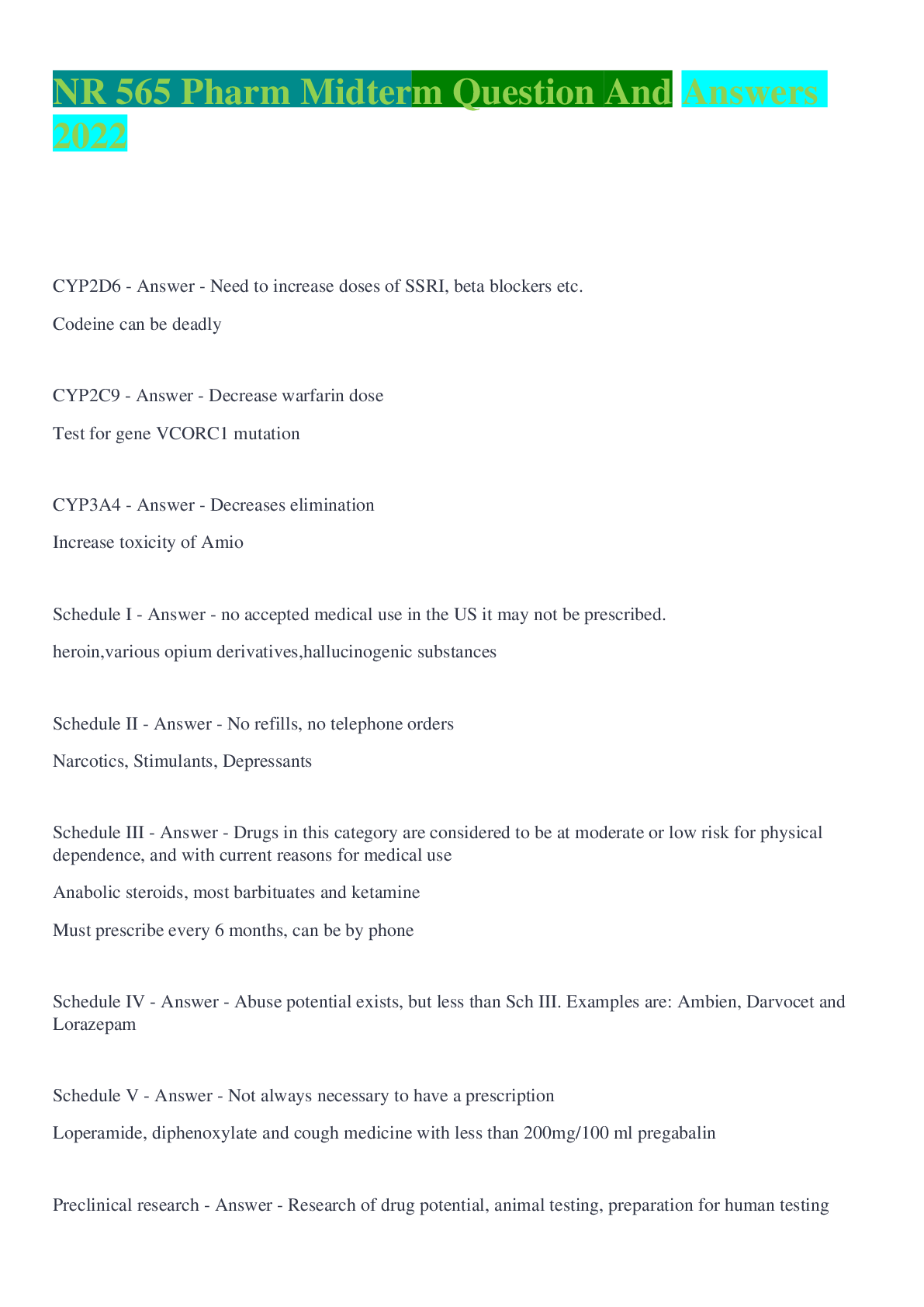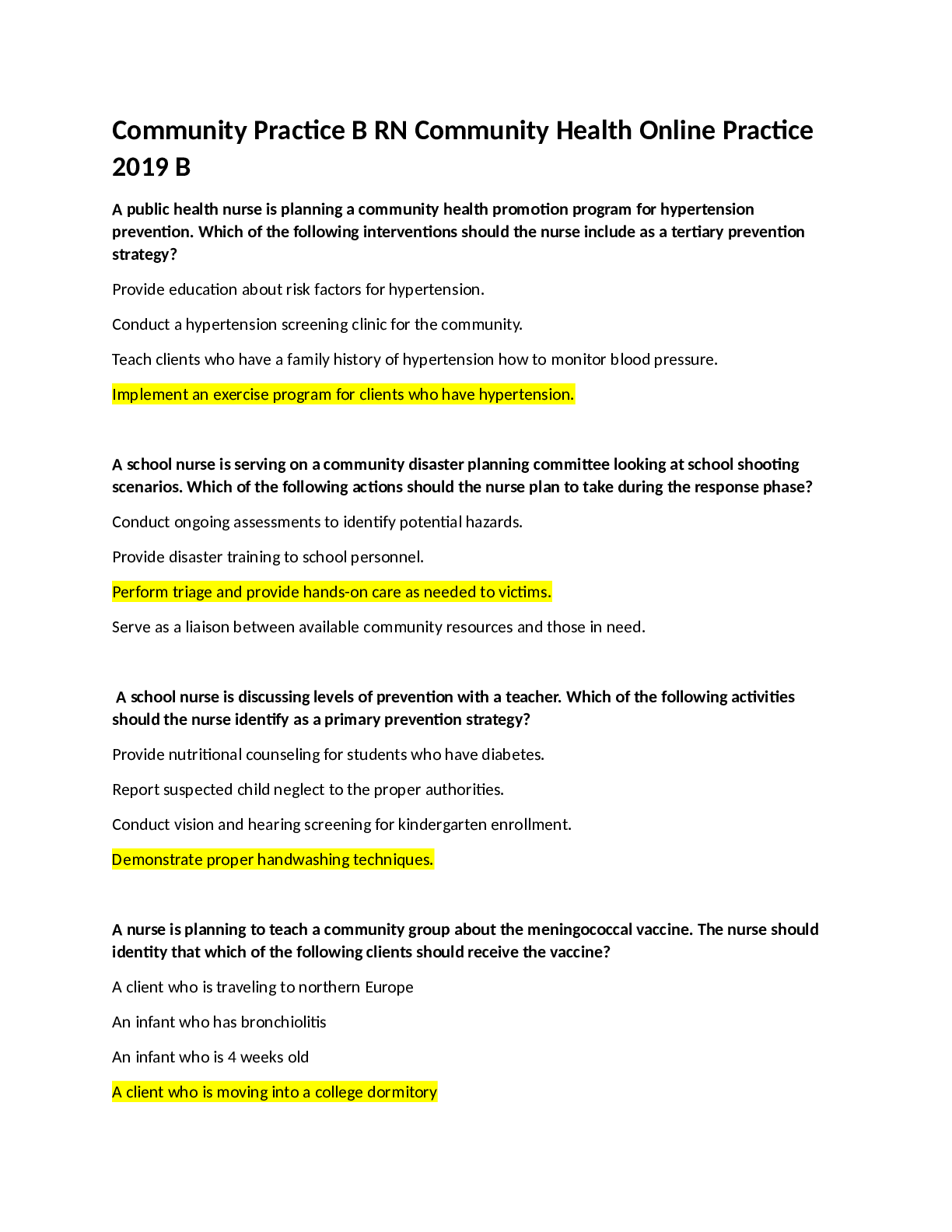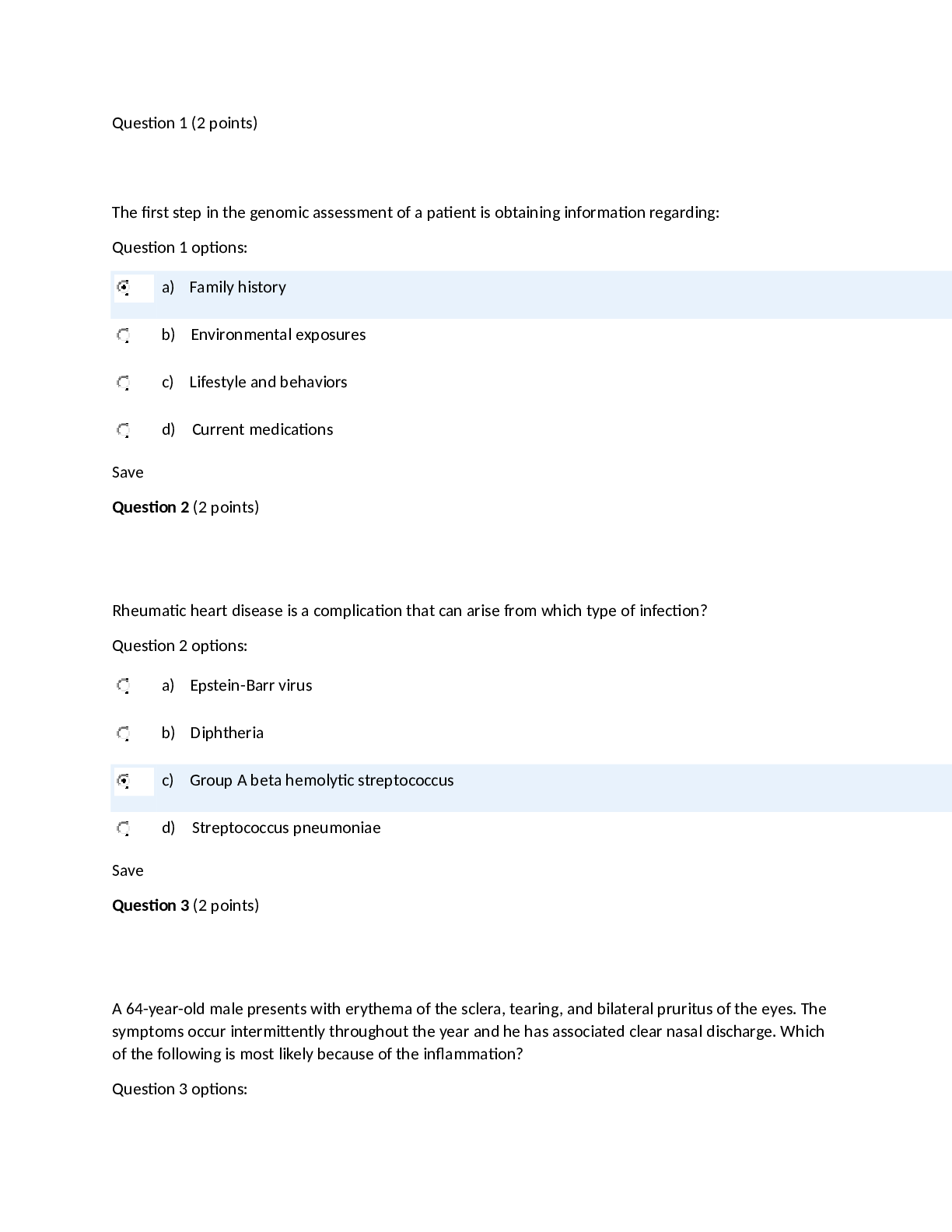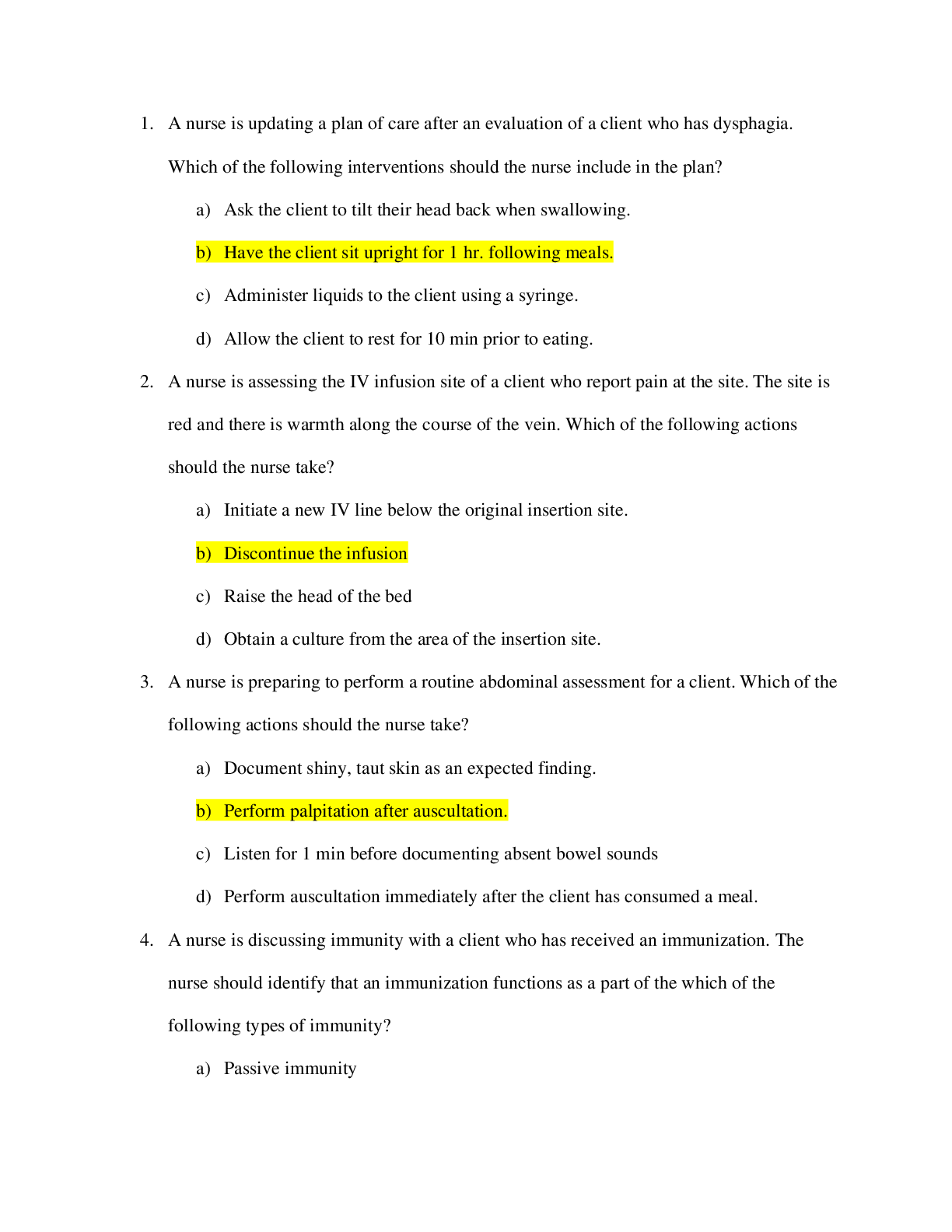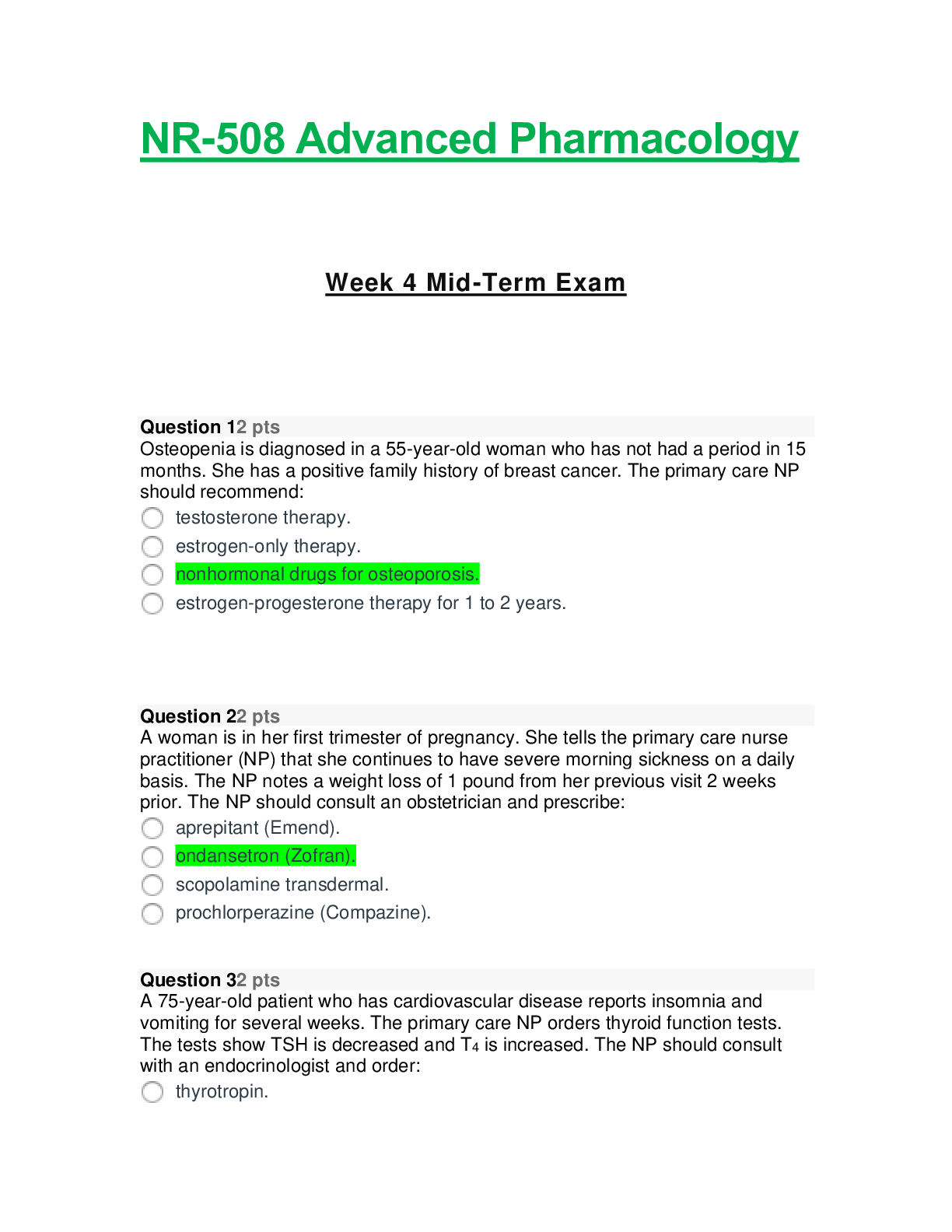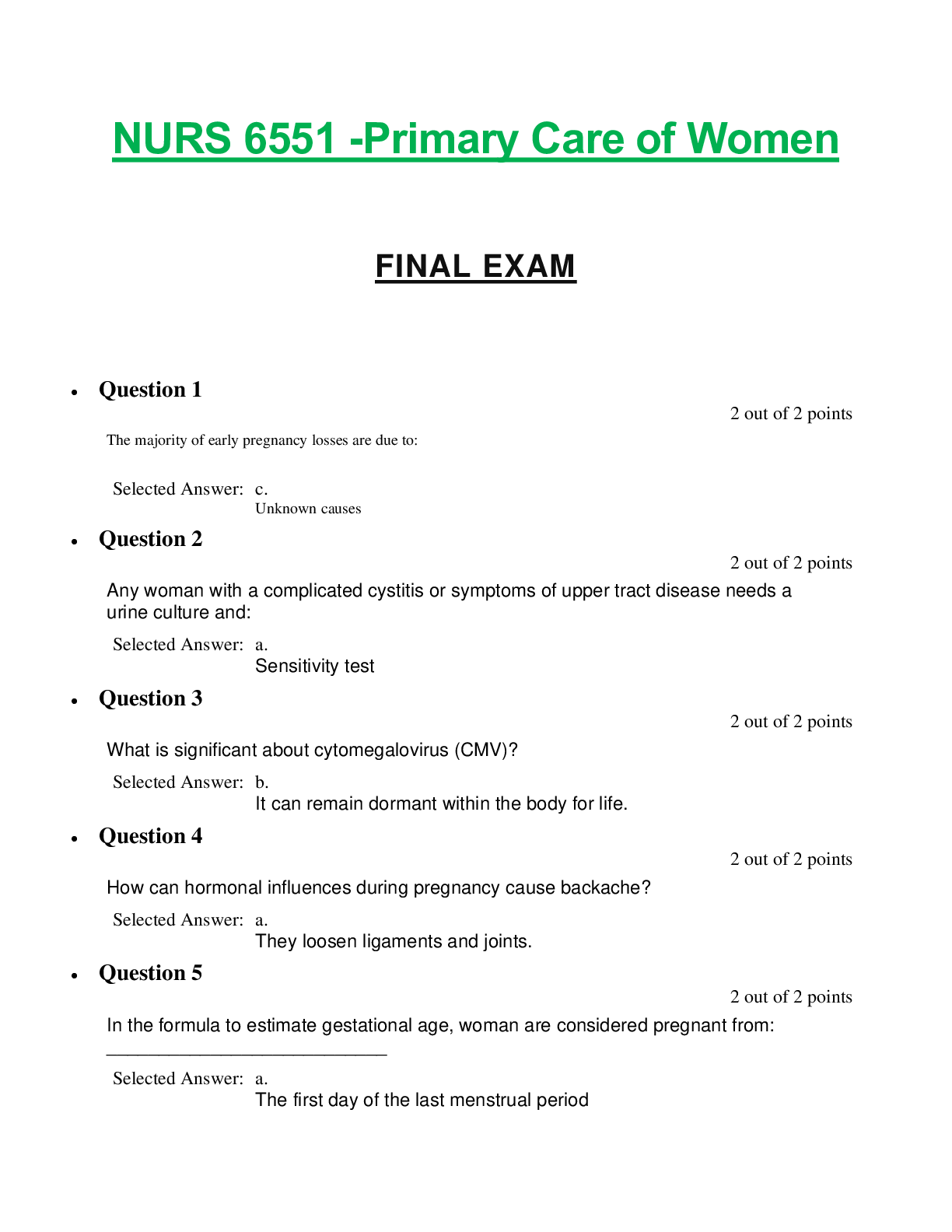*NURSING > EXAM > NURS-6501N Week 6,Advanced Pathophysiology_WALDEN UNIVERSITY: QUESTION AND ANSWERS RATED A+ (All)
NURS-6501N Week 6,Advanced Pathophysiology_WALDEN UNIVERSITY: QUESTION AND ANSWERS RATED A+
Document Content and Description Below
• Question 1 0 out of 0 points When completing this quiz, did you comply with Walden University’s Code of Conduct including the expectations for academic integrity? • Question 2 ... 1 out of 1 points Which patient would the nurse assess for paroxysmal nocturnal dyspnea (PND)? A patient with: • Question 3 1 out of 1 points A 26-year-old female recently underwent surgery and is now experiencing dyspnea, cough, fever, and leukocytosis. Tests reveal that she has a collapsed lung caused by removal of air from obstructed alveoli. What condition will the nurse observe on the chart? • Question 4 1 out of 1 points Which of the following shows a correct cause and effect sequence in the development of acute respiratory distress syndrome (ARDS)? • Question 5 1 out of 1 points A 65-year-old male recently had a cerebrovascular accident that resulted in dysphagia. He now has aspiration of gastric contents. The nurse assesses the patient for which complication? • Question 6 1 out of 1 points A 42-year-old male was involved in a motor vehicle accident during which he suffered a severe head injury. He died shortly after the accident from loss of respiration. The nurse suspects the area of the brain most likely involved is the: • Question 7 1 out of 1 points A 53-year-old male with a 20-year history of smoking is diagnosed with emphysema. When the nurse is asked what causes this, what is the nurse’s best response? Changes in his lungs are caused by: • Question 8 1 out of 1 points A 20-year-old male is in acute pain. An arterial blood gas reveals decreased carbon dioxide (CO2) levels. Which of the following does the nurse suspect is the most likely cause? • Question 9 1 out of 1 points A 14-year-old male is experiencing an asthma exacerbation. When reviewing the lab results, which of the following cells in the submucosa promote this inflammatory response and will be elevated? • Question 10 1 out of 1 points A 50-year-old male presents with hypotension, hypoxemia, and tracheal deviation to the left. Tests reveal that the air pressure in the pleural cavity exceeds barometric pressure in the atmosphere. Based upon these assessment findings, what does the nurse suspect the patient is experiencing? • Question 11 1 out of 1 points A 9-year-old male contracted influenza. Which of the following complications is of greatest concern to the nurse? • Question 12 1 out of 1 points A 57-year-old male presents with cough, sputum production, dyspnea, and decreased lung volume. He is diagnosed with pneumoconiosis. When taking the patient’s history, which finding is the most probable cause of his illness? • Question 13 1 out of 1 points While reviewing lab results, to help confirm a diagnosis of cystic fibrosis in a 1-year-old child which substance will be present in the child’s sweat? • Question 14 1 out of 1 points A geneticist is discussing cystic fibrosis (CF). Which information should be included? CF is an _____ disease. • Question 15 1 out of 1 points A 50-year-old diabetic male did not take his medication and is now in metabolic acidosis. He is experiencing Kussmaul respirations. What type of breathing will the nurse observe upon assessment? • Question 16 1 out of 1 points An 80-year-old female develops pneumonia in the hospital. She becomes cyanotic, tachycardic, and develops a fever and cough. Chest x-ray reveals pus in the pleural space. Which of the following is the most likely diagnosis documented on the chart? • Question 17 1 out of 1 points A 45-year-old male undergoes lung transplantation. He now suffers from airway occlusion secondary to fibrosis. Which diagnosis will the nurse see on the chart? • Question 18 1 out of 1 points A 2-week-old female presents with fever, cough, respiratory distress, and empyema. Which of the following is the most likely diagnosis the nurse will observe on the chart? • Question 19 1 out of 1 points Individuals with a recent diagnosis of emphysema should be assessed for which most common presenting factor? • Question 20 1 out of 1 points A nurse recalls asthma is classified by: • Question 21 1 out of 1 points A 28-year-old male reports to his primary care provider that he has had a cold for a week and is coughing up bloody secretions. When giving report, what term should the nurse use to describe this condition? • Question 22 1 out of 1 points A newborn has respiratory distress syndrome. When obtaining the patient’s history, which of the following is the most important predisposing factor for this condition? • Question 23 1 out of 1 points A nurse is preparing to teach the staff about asthma. Which information should the nurse include? Airway hyper-responsiveness in asthma is related to: • Question 24 1 out of 1 points If an individual with respiratory difficulty were retaining too much carbon dioxide, which of the following compensatory responses would the nurse expect to be initiated? • Question 25 1 out of 1 points A 25-year-old male presents with chronic bronchitis of 5 months’ duration. When obtaining the patient’s history, which of the following findings is most likely to cause this condition? • Question 26 1 out of 1 points A 6-month-old female presents with rhinorrhea, cough, poor feeding, lethargy, and fever. She is diagnosed with bronchiolitis. Which of the following will the nurse most likely observe on the culture report? • Question 27 1 out of 1 points A nurse is preparing to teach the staff about asthma. Which information should the nurse include? Airway obstruction contributing to increased airflow resistance and hypoventilation in asthma is caused by: • Question 28 1 out of 1 points A 13-year-old female is diagnosed with asthma. Which of the following should the nurse teach the patient to recognize as part of an asthmatic attack? • Question 29 1 out of 1 points A 15-year-old female is diagnosed with restrictive lung disease caused by fibrosis. The patient had a pulmonary functions test. Which of the following findings is expected? • Question 30 1 out of 1 points A 22-year-old female presents with chronic bronchitis. Tests reveal closure of the airway during expiration. While planning care, a nurse recalls this condition is most likely caused by: • Question 31 1 out of 1 points A 10-year-old female develops pneumonia. Physical exam reveals subcostal and intercostal retractions. She reports that breathing is difficult and she feels she cannot get enough air. What term should the nurse use to document this condition? [Show More]
Last updated: 1 year ago
Preview 1 out of 7 pages
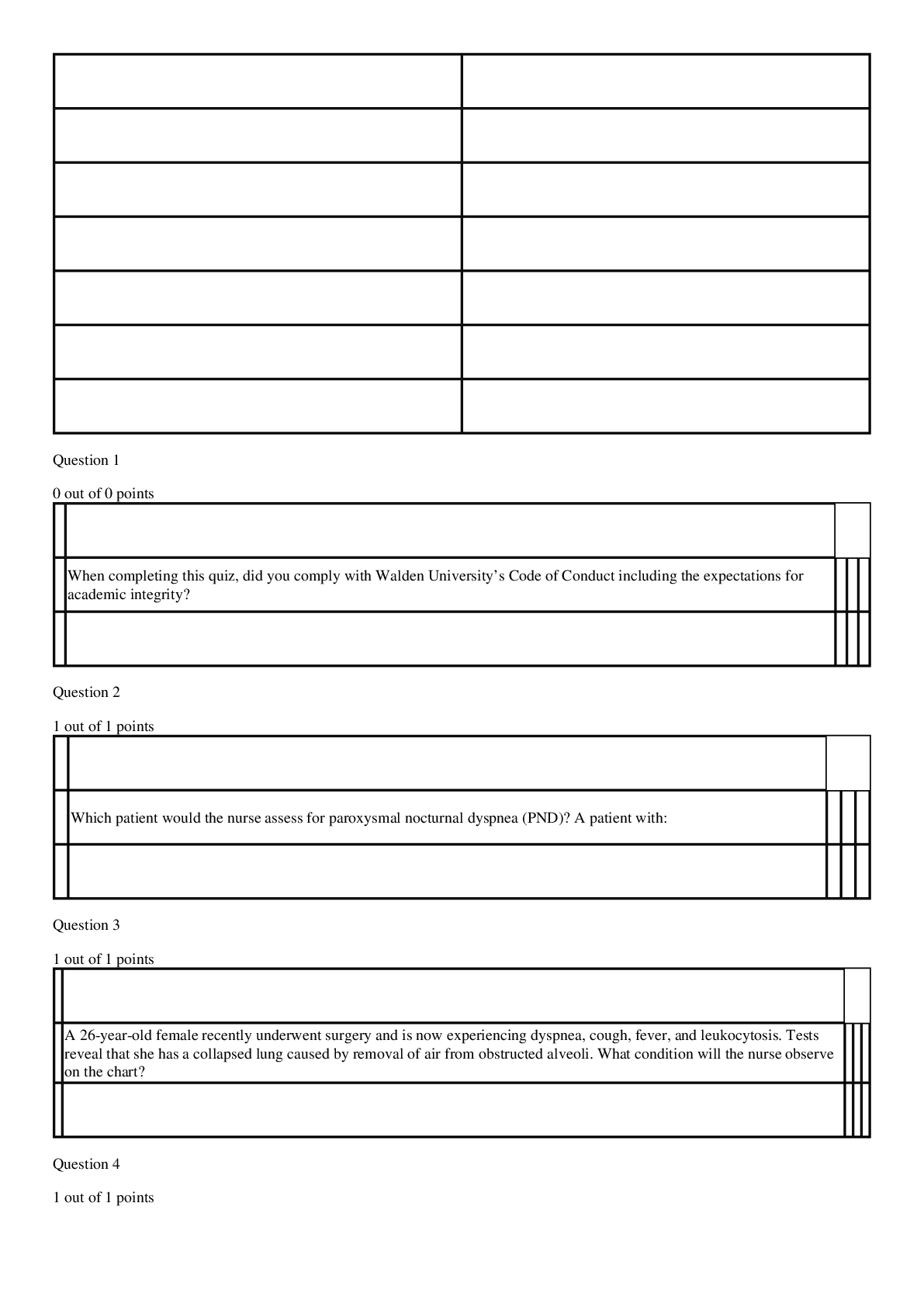
Reviews( 0 )
Document information
Connected school, study & course
About the document
Uploaded On
May 08, 2020
Number of pages
7
Written in
Additional information
This document has been written for:
Uploaded
May 08, 2020
Downloads
0
Views
38

